 Search by Keyword
|
"BLACKBIRD"
(John Lennon – Paul McCartney)
If you are a Beatles fan and a guitarist, as many are, and happen to have an acoustic guitar with you when you're with a group of friends, what do you think the likelihood is that someone will ask you to play "Blackbird"? I would think the likelihood is pretty darn high!
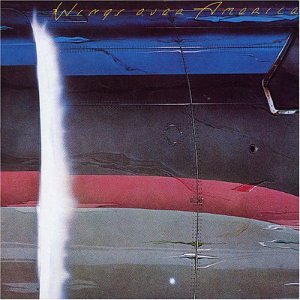 What first appeared as a simple but impressive solo acoustic Paul track on the “White Album” has ended up becoming one of the most popular signature pieces of his entire career. Apart from “Long Tall Sally,” it was one of the first Beatles songs that McCartney decided to perform live during his 1975/1976 “Wings Over The World” tour (as appearing on the album "Wings Over America." Then, from 2002 onward, “Blackbird” has become a fixture in his set lists, the song getting a rousing reception after every performance on every tour he's done since. For such a delicate acoustic piece hidden away as the eleventh track on a double-album, a song that was never a charted hit, it has been said to have become one of the Top Ten most covered songs of all time. Not bad, Paul. What first appeared as a simple but impressive solo acoustic Paul track on the “White Album” has ended up becoming one of the most popular signature pieces of his entire career. Apart from “Long Tall Sally,” it was one of the first Beatles songs that McCartney decided to perform live during his 1975/1976 “Wings Over The World” tour (as appearing on the album "Wings Over America." Then, from 2002 onward, “Blackbird” has become a fixture in his set lists, the song getting a rousing reception after every performance on every tour he's done since. For such a delicate acoustic piece hidden away as the eleventh track on a double-album, a song that was never a charted hit, it has been said to have become one of the Top Ten most covered songs of all time. Not bad, Paul.
Songwriting History
Shortly after returning from India where he was learning the art of Trancendental Meditation with the other Beatles, Paul wrote "Blackbird" while at High Park Farm in Kintyre, Scotland in April of 1968. Both the melody and the lyrics have specific inspiration behind them.
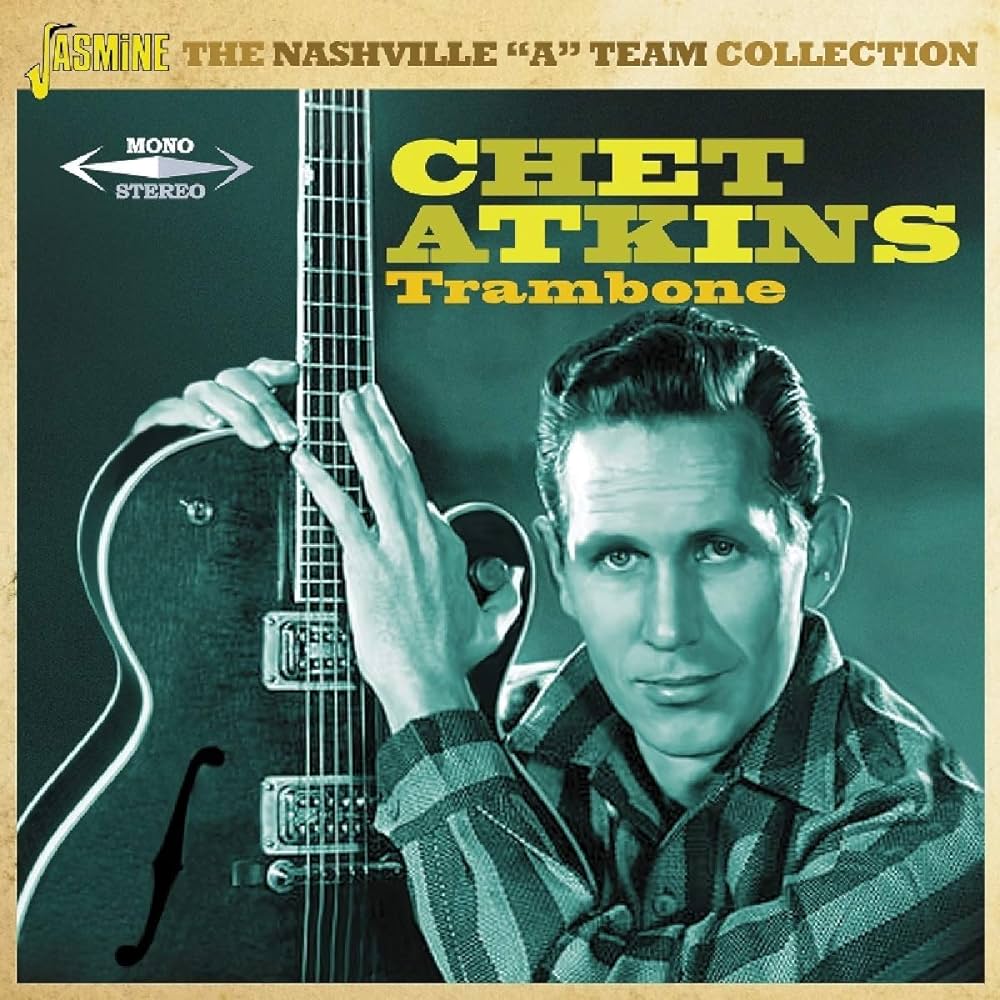 Concerning the melody, Paul explains in his book “Many Years From Now”: "The original inspiration was from a well-known piece by Bach, which I never knew the title of, which George and I had learned to play at an early age; he better than me actually. Part of its structure is a particular harmonic thing between the melody and the bass line which intrigued me. Bach was always one of our favorite composers; we felt we had a lot in common with him. For some reason we thought his music was very similar to ours and we latched on to him amazingly quickly. We also liked the stories of him being the church organist and wopping this stuff out weekly, which was rather similar to what we were doing. We were very pleased to hear that. I developed the melody on guitar based on the Bach piece and took it somewhere else, took it to another level, then I just fitted the words to it." In Paul's book "The Lyrics," he adds: "The fingerpicking style was something we admired in Chet Atkins, particularly in a piece called 'Trambone,' though it was also played by Colin Manley, from a group called The Remo Four. They'd started out in Liverpool around the same time as The Beatles." Concerning the melody, Paul explains in his book “Many Years From Now”: "The original inspiration was from a well-known piece by Bach, which I never knew the title of, which George and I had learned to play at an early age; he better than me actually. Part of its structure is a particular harmonic thing between the melody and the bass line which intrigued me. Bach was always one of our favorite composers; we felt we had a lot in common with him. For some reason we thought his music was very similar to ours and we latched on to him amazingly quickly. We also liked the stories of him being the church organist and wopping this stuff out weekly, which was rather similar to what we were doing. We were very pleased to hear that. I developed the melody on guitar based on the Bach piece and took it somewhere else, took it to another level, then I just fitted the words to it." In Paul's book "The Lyrics," he adds: "The fingerpicking style was something we admired in Chet Atkins, particularly in a piece called 'Trambone,' though it was also played by Colin Manley, from a group called The Remo Four. They'd started out in Liverpool around the same time as The Beatles."
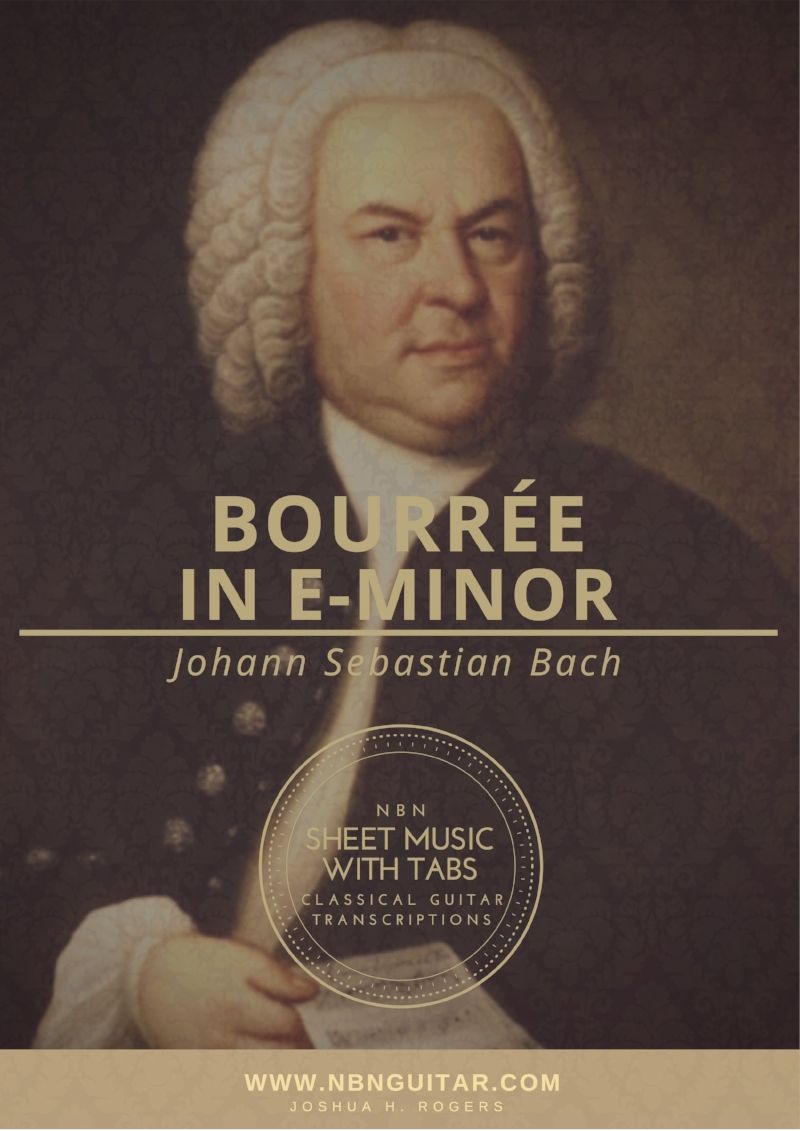 The piece of music that Paul referred to above has been identified as J.S. Bach's "Bourree in E minor." Paul elaborated about this a little more during a 2014 interview at Rollins College, Winter Park, Florida. “You often did things just as party pieces, things to show off, literally, at a party. You know, 'Hey girls...', you know, you would do that. Unfortunately, none of them bothered, you know. But there was a thing that George Harrison and I used to do which was, we thought it was Bach's piece. It was kind of the beginning of a Bach piece, but nobody knew any better, so it was like...(plays Bach introduction). See, that sounds like Bach. It goes on; I don't know where it goes. It goes down a rabbit hole. So I took that and I made it...(plays 'Blackbird' introduction)...and that became the beginning of 'Blackbird.' So, you know, you'd take these little discoveries and kind of just move them around a little bit to suit you because it was something you loved.” The piece of music that Paul referred to above has been identified as J.S. Bach's "Bourree in E minor." Paul elaborated about this a little more during a 2014 interview at Rollins College, Winter Park, Florida. “You often did things just as party pieces, things to show off, literally, at a party. You know, 'Hey girls...', you know, you would do that. Unfortunately, none of them bothered, you know. But there was a thing that George Harrison and I used to do which was, we thought it was Bach's piece. It was kind of the beginning of a Bach piece, but nobody knew any better, so it was like...(plays Bach introduction). See, that sounds like Bach. It goes on; I don't know where it goes. It goes down a rabbit hole. So I took that and I made it...(plays 'Blackbird' introduction)...and that became the beginning of 'Blackbird.' So, you know, you'd take these little discoveries and kind of just move them around a little bit to suit you because it was something you loved.”
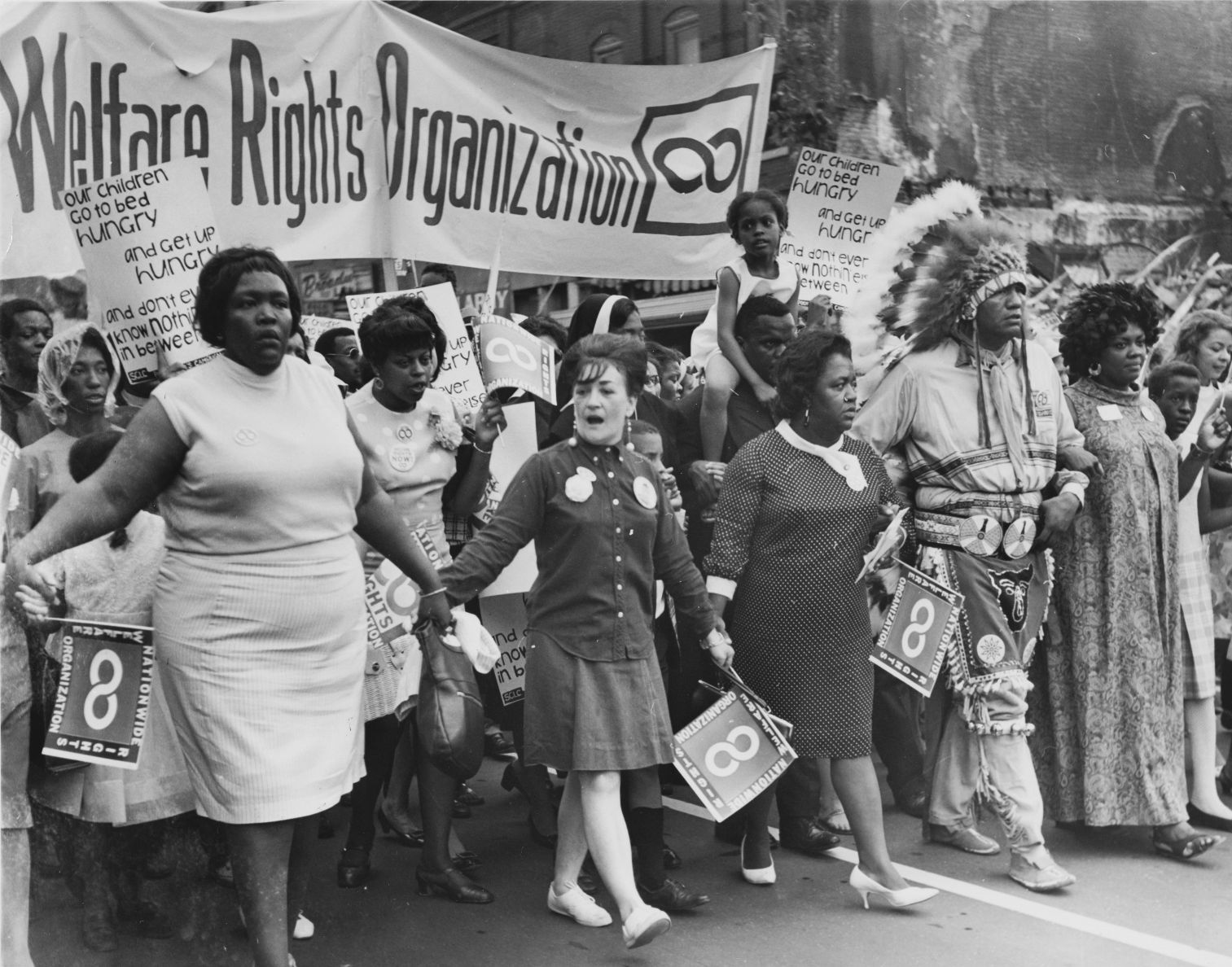 As for the lyrics, Paul relates: “I had in mind a black woman, rather than a bird. Those were the days of the civil-rights movement, which all of us cared passionately about, so this was really a song from me to a black woman, experiencing these problems in the States: 'Let me encourage you to keep trying, to keep your faith, there is hope.' As is often the case with my things, a veiling took place so, rather than say 'Black woman living in Little Rock' and be very specific, she became a bird, became symbolic, so you could apply it to your particular problem." During Paul's "Driving USA" tour, he would introduce the song by saying that the term "bird" was British slang for "girl," so in essence the song was about a "black girl.” As for the lyrics, Paul relates: “I had in mind a black woman, rather than a bird. Those were the days of the civil-rights movement, which all of us cared passionately about, so this was really a song from me to a black woman, experiencing these problems in the States: 'Let me encourage you to keep trying, to keep your faith, there is hope.' As is often the case with my things, a veiling took place so, rather than say 'Black woman living in Little Rock' and be very specific, she became a bird, became symbolic, so you could apply it to your particular problem." During Paul's "Driving USA" tour, he would introduce the song by saying that the term "bird" was British slang for "girl," so in essence the song was about a "black girl.”
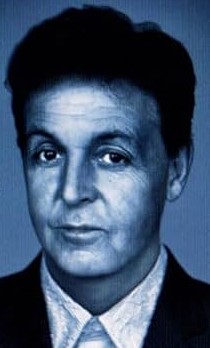 In a 2002 radio interview with KCRW's Chris Douridas, Paul elaborates a little more about the lyrical meaning of the song: “I was in Scotland playing my guitar and I remembered this whole idea of 'you were only waiting for this moment to arise' was about, you know, the black people's struggle in the southern states, and I was using the symbolism of a blackbird. It's not really about a blackbird whose wings are broken, you know. It's a bit more symbolic.” In a 2002 radio interview with KCRW's Chris Douridas, Paul elaborates a little more about the lyrical meaning of the song: “I was in Scotland playing my guitar and I remembered this whole idea of 'you were only waiting for this moment to arise' was about, you know, the black people's struggle in the southern states, and I was using the symbolism of a blackbird. It's not really about a blackbird whose wings are broken, you know. It's a bit more symbolic.”
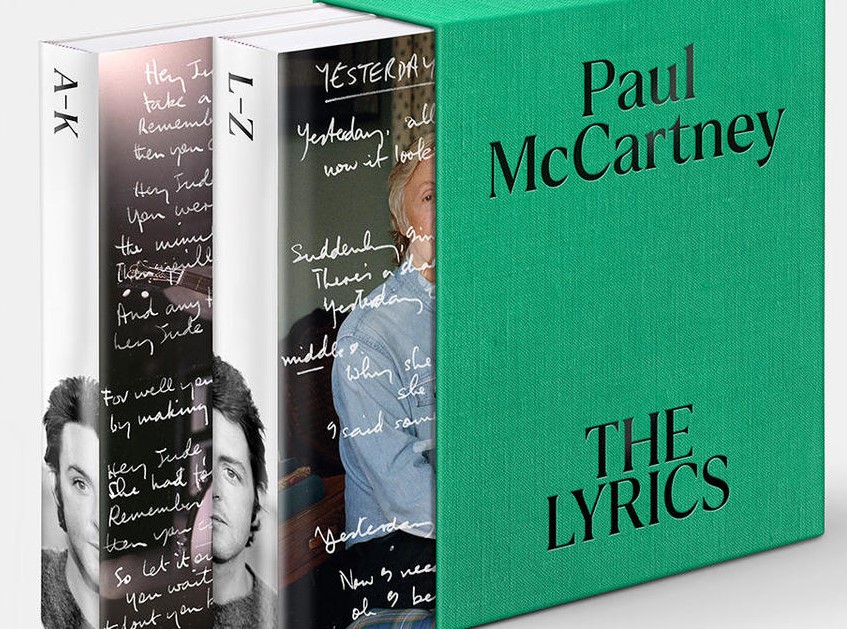 "This is one of my themes: 'take a sad song and make it better,' let this song help you. 'Empowerment' is a good word for it. Through the years I have had lots of wonderful letters from people saying, 'That song really helped me through a terrible period.' I think that the single greatest joy of having been a musician, and been in The Beatles, is when those letters come back to you and you find that you've really helped people. That's the magic of it all, that's the wonder, because I wrote them with half an idea that they might help, but it really makes me feel very proud when I realize that they have been of actual help to people." "This is one of my themes: 'take a sad song and make it better,' let this song help you. 'Empowerment' is a good word for it. Through the years I have had lots of wonderful letters from people saying, 'That song really helped me through a terrible period.' I think that the single greatest joy of having been a musician, and been in The Beatles, is when those letters come back to you and you find that you've really helped people. That's the magic of it all, that's the wonder, because I wrote them with half an idea that they might help, but it really makes me feel very proud when I realize that they have been of actual help to people."
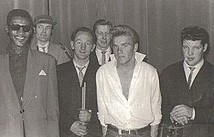 "I am very conscious that Liverpool was a slave port," Paul explained in his book "The Lyrics," "and also that is had the first Caribbean community in England. So we met a lot of Black guys, particularly in the music world. I'm thinking in particular of Lord Woodbine, a calypso singer and promoter who ran a couple of joints in Liverpool, including the New Cabaret Artists' Club, where he hosted The Silver Beetles. Then there was Derry of Derry And The Seniors, a band that had paved the way for us in Hamburg." "I am very conscious that Liverpool was a slave port," Paul explained in his book "The Lyrics," "and also that is had the first Caribbean community in England. So we met a lot of Black guys, particularly in the music world. I'm thinking in particular of Lord Woodbine, a calypso singer and promoter who ran a couple of joints in Liverpool, including the New Cabaret Artists' Club, where he hosted The Silver Beetles. Then there was Derry of Derry And The Seniors, a band that had paved the way for us in Hamburg."
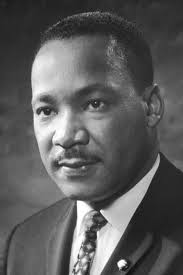 Paul continues: "At the time in 1968 when I was writing 'Blackbird,' I was very conscious of the terribly racial tensions in the US. The year before, 1967, had been a particularly bad year, but 1968 was even worse. The song was written only a few weeks after the assassination of Martin Luther King Jr. That imagery of the broken wings and the sunken eyes and the general longing for freedom is very much of its moment. Paul continues: "At the time in 1968 when I was writing 'Blackbird,' I was very conscious of the terribly racial tensions in the US. The year before, 1967, had been a particularly bad year, but 1968 was even worse. The song was written only a few weeks after the assassination of Martin Luther King Jr. That imagery of the broken wings and the sunken eyes and the general longing for freedom is very much of its moment.
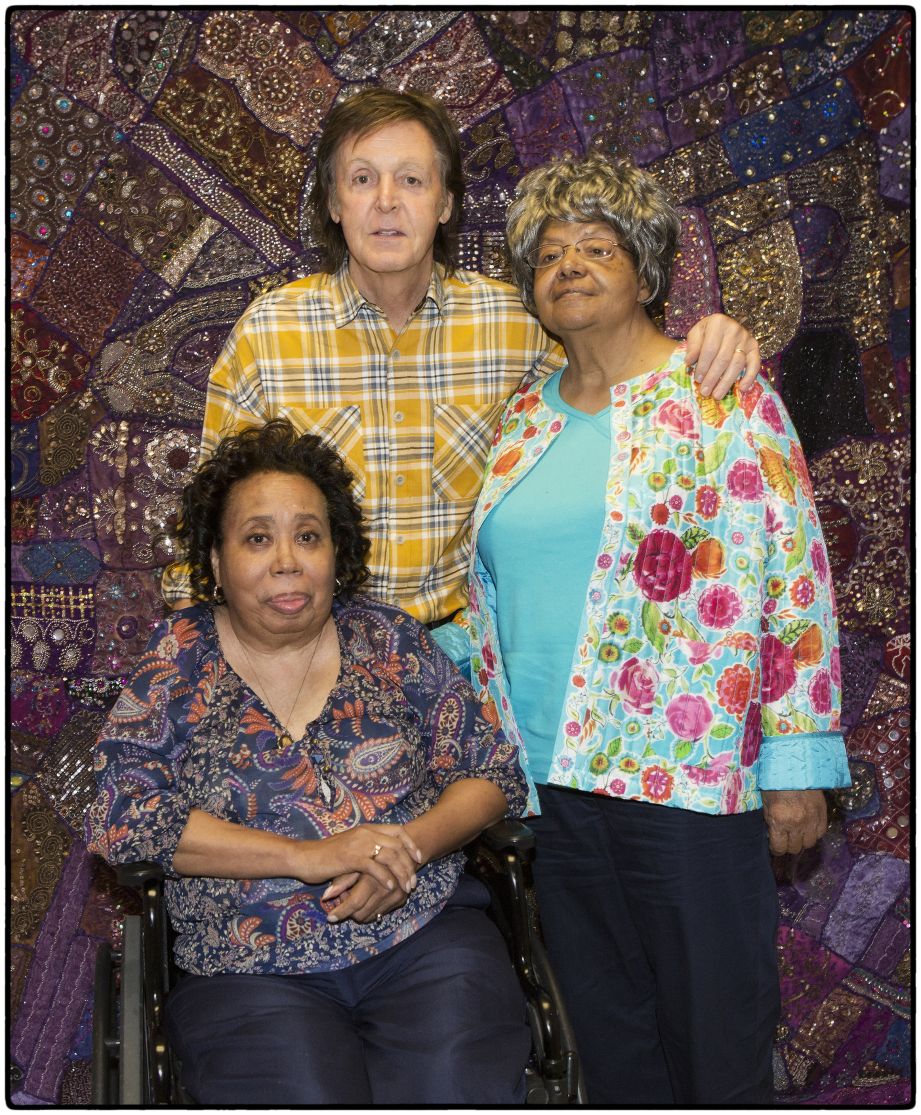 On April 30th, 2016, on his stop in Little Rock, Arkansas during his "One On One" tour, Paul was privileged to meet Thelma Mothershed Wair and Elizabeth Eckford, two black women who enrolled in the all-white Little Rock Central High School back in 1957. "Incredible to meet two...prisoners of the civil rights movement and inspiration for 'Blackbird,'" Paul stated at the time. Before playing 'Blackbird' at this show, he stated, "Way back in the '60s, there was a lot of trouble going on over civil rights, particularly in Little Rock. We would notice this on the news back in England, so it's a really important place for us, because to me, this is where civil rights started. We would see what was going on and sympathize with the people going through those troubles, and it made me want to write a song that, if it ever got back to the people going through those troubles, it might just help them a little bit, and that's this next one." On April 30th, 2016, on his stop in Little Rock, Arkansas during his "One On One" tour, Paul was privileged to meet Thelma Mothershed Wair and Elizabeth Eckford, two black women who enrolled in the all-white Little Rock Central High School back in 1957. "Incredible to meet two...prisoners of the civil rights movement and inspiration for 'Blackbird,'" Paul stated at the time. Before playing 'Blackbird' at this show, he stated, "Way back in the '60s, there was a lot of trouble going on over civil rights, particularly in Little Rock. We would notice this on the news back in England, so it's a really important place for us, because to me, this is where civil rights started. We would see what was going on and sympathize with the people going through those troubles, and it made me want to write a song that, if it ever got back to the people going through those troubles, it might just help them a little bit, and that's this next one."
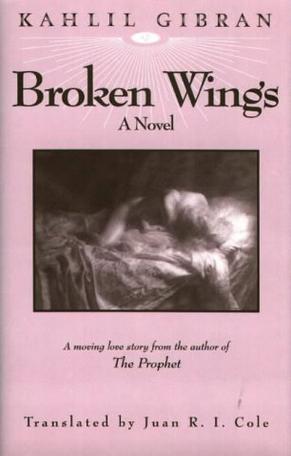 Some accounts through the years tell of Paul in India waking up one morning, hearing a blackbird, picking up his Martin acoustic guitar and writing the song on the spot. While this story has been generally assumed for years, Paul's quotes, as indicated above, need to be considered as the central established fact. He should know...he was there! Some accounts through the years tell of Paul in India waking up one morning, hearing a blackbird, picking up his Martin acoustic guitar and writing the song on the spot. While this story has been generally assumed for years, Paul's quotes, as indicated above, need to be considered as the central established fact. He should know...he was there!
It has also been insinuated that the lyrics of "Blackbird" were inspired by the poem "Broken Wings" written by Khalil Gibran, first published in 1912. Since the poem tackles many issues of the time in the Eastern Mediteranean, such as the rights of women and religious corruption, it appears likely, on the surface, that Paul may have been influenced by this writing given that its title played a substaintial role in the lyrics. Nonetheless, this has never been validated.
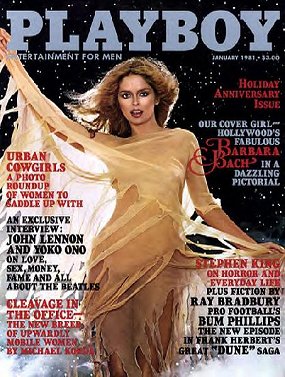 Most assume that this “Lennon / McCartney” composition was actually written entirely by Paul himself. However, in his 1980 Playboy Magazine interview, John claims otherwise. “I gave Paul a line on that one, an important line, but it's really all him. Paul is good at that kind of guitar thing. So is John Denver.” The identity of the “important line” has never been revealed. And the comparison to John Denver is assumed to have been a compliment. Most assume that this “Lennon / McCartney” composition was actually written entirely by Paul himself. However, in his 1980 Playboy Magazine interview, John claims otherwise. “I gave Paul a line on that one, an important line, but it's really all him. Paul is good at that kind of guitar thing. So is John Denver.” The identity of the “important line” has never been revealed. And the comparison to John Denver is assumed to have been a compliment.
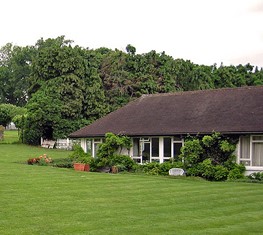
George Harrison's "Kinfauns" home in Esher, Surrey
Recording History
The first time "Blackbird" was committed to tape was on May 29th, 1968, this being one of many demo recordings made at George Harrison's 'Kinfauns' home in Esher, Surrey on an Ampex four-track machine. This recording consists of Paul on acoustic guitar and vocals, both double-tracked, with a slight bit of bird sound effects courtesy of John in the background. The structure of the song hadn't been settled on yet and the ending was different than we know it now, but the lyrics were all in place at this point.
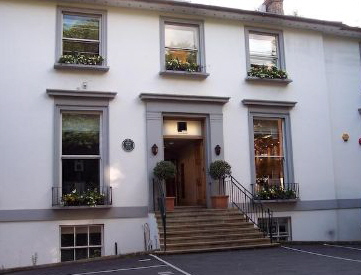 Paul was proud enough of “Blackbird” that it was the first McCartney composition he brought into EMI Studios for their new album. It was the fourth “White Album” song to be started but the first to be completed, since it was completely recorded in one day, this day being June 11th, 1968. Documents show the session beginning in EMI Studio Two at 6:30 pm. Paul was proud enough of “Blackbird” that it was the first McCartney composition he brought into EMI Studios for their new album. It was the fourth “White Album” song to be started but the first to be completed, since it was completely recorded in one day, this day being June 11th, 1968. Documents show the session beginning in EMI Studio Two at 6:30 pm.
 Engineer Geoff Emerick, in his book “Here, There And Everywhere,” recounts the events of this day as well as the atmosphere present during “White Album” recording sessions: “The Beatles – who clearly didn't like being in one another's company anymore – were able to split up into small groups, working simultaneously in two or even all three of the studios in the Abbey Road complex. This soon became standard operating procedure for much of the rest of the 'White Album.' It was as if the four band members were so much in separate spaces personally, they wanted to make their record in separate spaces physically. On those evenings, I would normally work with Paul, because I had the best rapport with him. Another engineer would accompany John or George Harrison, with the taciturn (and rarely consulted) Ringo shuttling between studios as he was needed. That was the situation on the night that we worked on Paul's first contribution to the album, the poignant ballad 'Blackbird.'" Engineer Geoff Emerick, in his book “Here, There And Everywhere,” recounts the events of this day as well as the atmosphere present during “White Album” recording sessions: “The Beatles – who clearly didn't like being in one another's company anymore – were able to split up into small groups, working simultaneously in two or even all three of the studios in the Abbey Road complex. This soon became standard operating procedure for much of the rest of the 'White Album.' It was as if the four band members were so much in separate spaces personally, they wanted to make their record in separate spaces physically. On those evenings, I would normally work with Paul, because I had the best rapport with him. Another engineer would accompany John or George Harrison, with the taciturn (and rarely consulted) Ringo shuttling between studios as he was needed. That was the situation on the night that we worked on Paul's first contribution to the album, the poignant ballad 'Blackbird.'"
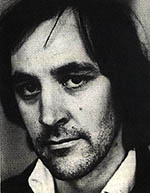 John's presence during Paul's "Blackbird" rehearsals were caught on tape for about a half hour, from 6:30 to 7 pm, until it was decided that his services weren't needed. Geoff Emerick explains: “Neither Ringo nor George was present on that particular evening, and John wanted to begin compiling sound effects for what would ultimately become 'Revolution 9,' so as soon as he learned that another studio was available (at 7 pm), he decided to head off with (producer) Chris Thomas and Phil (McDonald) – accompanied, as usual, by Yoko. That left George Martin and me alone with Paul, which came as a blessed relief to me after all the stress of the preceding sessions; it always was a lot easier to deal with one Beatle." George and Ringo were actually in San Francisco, California on this day, George being filmed playing sitar with Ravi Shankar for the documentary film "Raga." John's presence during Paul's "Blackbird" rehearsals were caught on tape for about a half hour, from 6:30 to 7 pm, until it was decided that his services weren't needed. Geoff Emerick explains: “Neither Ringo nor George was present on that particular evening, and John wanted to begin compiling sound effects for what would ultimately become 'Revolution 9,' so as soon as he learned that another studio was available (at 7 pm), he decided to head off with (producer) Chris Thomas and Phil (McDonald) – accompanied, as usual, by Yoko. That left George Martin and me alone with Paul, which came as a blessed relief to me after all the stress of the preceding sessions; it always was a lot easier to deal with one Beatle." George and Ringo were actually in San Francisco, California on this day, George being filmed playing sitar with Ravi Shankar for the documentary film "Raga."
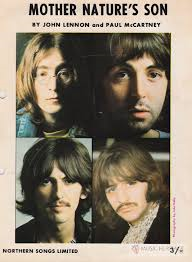 Before John left, however, many arrangement ideas were suggested. The tape of the rehearsals reveals Paul explaining: "You see, the only thing is that immediately I start to arrange it, I imagine a string quartet after the second verse. George Martin had a very specific idea. "Stop completely; rhythm as well, and then you start again." And then, after "the stop bit, there should be an arranged sound coming from a distance - a fairly complicated one like a bit of decoration that you've got on the back of a painting...it suddenly comes up and as it comes up close, you start again." So it was George Martin's suggestion to stop the song and then start again, although the "arranged sound" of other instruments was eventually dropped. John attempted to accompany Paul on acoustic guitar and then on piano, finally suggesting later from the control room, "A little bit of brass band, you know. A very nice little bit of brass band." Paul replied, "Yes, that would be lovely," which prompted John's reply, "A little bit of Nilsson's brass band," a reference to Harry Nilsson's arrangements on his album "Pandimonium Shadow Show," a record that both he and Paul loved. However, McCartney thought it would work better on his other acoustic song "Mother Nature's Son," which he then quickly demonstrated. He remembered John's suggestion when that song was eventually recorded. Before John left, however, many arrangement ideas were suggested. The tape of the rehearsals reveals Paul explaining: "You see, the only thing is that immediately I start to arrange it, I imagine a string quartet after the second verse. George Martin had a very specific idea. "Stop completely; rhythm as well, and then you start again." And then, after "the stop bit, there should be an arranged sound coming from a distance - a fairly complicated one like a bit of decoration that you've got on the back of a painting...it suddenly comes up and as it comes up close, you start again." So it was George Martin's suggestion to stop the song and then start again, although the "arranged sound" of other instruments was eventually dropped. John attempted to accompany Paul on acoustic guitar and then on piano, finally suggesting later from the control room, "A little bit of brass band, you know. A very nice little bit of brass band." Paul replied, "Yes, that would be lovely," which prompted John's reply, "A little bit of Nilsson's brass band," a reference to Harry Nilsson's arrangements on his album "Pandimonium Shadow Show," a record that both he and Paul loved. However, McCartney thought it would work better on his other acoustic song "Mother Nature's Son," which he then quickly demonstrated. He remembered John's suggestion when that song was eventually recorded.
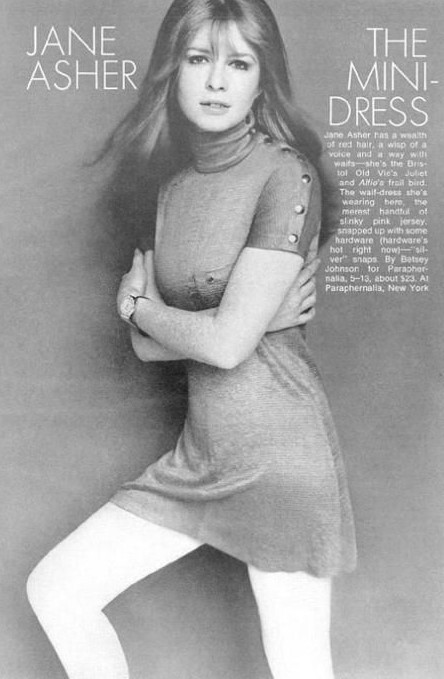 Geoff Emerick continues: "Playing his left-handed acoustic guitar, Paul began running the song down, and I loved it immediately. Perfectionist that he was, he performed it over and over again, trying to get the complicated guitar part right all the way through. At one point a cameraman appeared to do a little filming for an Apple promo, and that interrupted the flow a little bit, but Paul just carried on, with his new lady friend sitting cross-legged at his feet. Paul had recently broken up with Jane Asher, and that might have been another reason why he was so subdued during the 'White Album' sessions...I suppose it's possible that Paul invited the girl along as an answer to John bringing in Yoko. But in contrast to Yoko, she didn't stay long, and George Martin had to leave early, too.” Geoff Emerick continues: "Playing his left-handed acoustic guitar, Paul began running the song down, and I loved it immediately. Perfectionist that he was, he performed it over and over again, trying to get the complicated guitar part right all the way through. At one point a cameraman appeared to do a little filming for an Apple promo, and that interrupted the flow a little bit, but Paul just carried on, with his new lady friend sitting cross-legged at his feet. Paul had recently broken up with Jane Asher, and that might have been another reason why he was so subdued during the 'White Album' sessions...I suppose it's possible that Paul invited the girl along as an answer to John bringing in Yoko. But in contrast to Yoko, she didn't stay long, and George Martin had to leave early, too.”
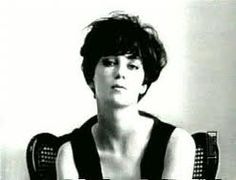 The Apple promo film, which was made to be shown to executives at EMI and Capitol Records, who would be soon distributing releases on Apple Records, shows Paul rehearsing “Blackbird” repeatedly. He made mistakes along the way but clearly brought it to perfection as he progressed. During the beginning of this filmed segment, on the floor off to Paul's right is the woman mentioned above. This was Francie Schwartz, Paul's current girlfriend, very soon to be replaced by Linda Eastman who would become his wife the following year. In the film, George Martin walks over to converse with Paul during these rehearsals, this appearing to be an annoyance to Paul who continues his rehearsals of the song despite George's interruption. The Apple promo film, which was made to be shown to executives at EMI and Capitol Records, who would be soon distributing releases on Apple Records, shows Paul rehearsing “Blackbird” repeatedly. He made mistakes along the way but clearly brought it to perfection as he progressed. During the beginning of this filmed segment, on the floor off to Paul's right is the woman mentioned above. This was Francie Schwartz, Paul's current girlfriend, very soon to be replaced by Linda Eastman who would become his wife the following year. In the film, George Martin walks over to converse with Paul during these rehearsals, this appearing to be an annoyance to Paul who continues his rehearsals of the song despite George's interruption.
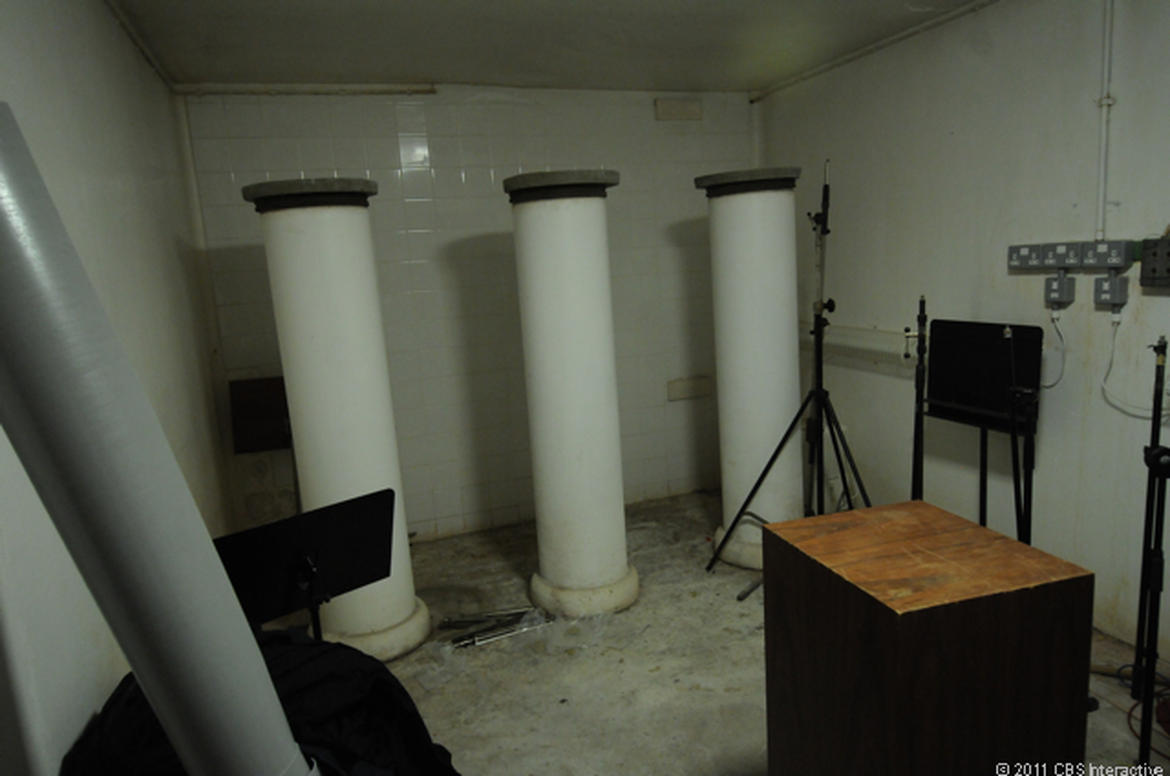 Geoff Emerick then relates: "After they'd gone, Paul remarked to me that he wanted the track to sound as if he was singing it outdoors. 'Fine,' I said, 'then let's do it outdoors.' He looked surprised, but there was a little spot outside of the echo chamber with just enough room for him to sit on a stool. I ran a long mic lead out there and that's where we recorded 'Blackbird.' Most of the bird noises were dubbed on later, from a sound effects record, but a couple of them were live, sparrows and finches singing outside the Abbey Road studio on a soft summer eve along with Paul McCartney." Engineer Ken Scott, however, has gone on record saying that "the only bird sounds present were from an EMI sound effects tape (which Paul and I put there) and interesingly there were no traffic noises, no plane sounds nor any other sound one would expect recording outside." It appears, therefore, that Geoff Emerick was confusing this recording session with another one on August 30th, 1974 (detailed below) where Paul did indeed perform the song outdoors. Geoff Emerick then relates: "After they'd gone, Paul remarked to me that he wanted the track to sound as if he was singing it outdoors. 'Fine,' I said, 'then let's do it outdoors.' He looked surprised, but there was a little spot outside of the echo chamber with just enough room for him to sit on a stool. I ran a long mic lead out there and that's where we recorded 'Blackbird.' Most of the bird noises were dubbed on later, from a sound effects record, but a couple of them were live, sparrows and finches singing outside the Abbey Road studio on a soft summer eve along with Paul McCartney." Engineer Ken Scott, however, has gone on record saying that "the only bird sounds present were from an EMI sound effects tape (which Paul and I put there) and interesingly there were no traffic noises, no plane sounds nor any other sound one would expect recording outside." It appears, therefore, that Geoff Emerick was confusing this recording session with another one on August 30th, 1974 (detailed below) where Paul did indeed perform the song outdoors.
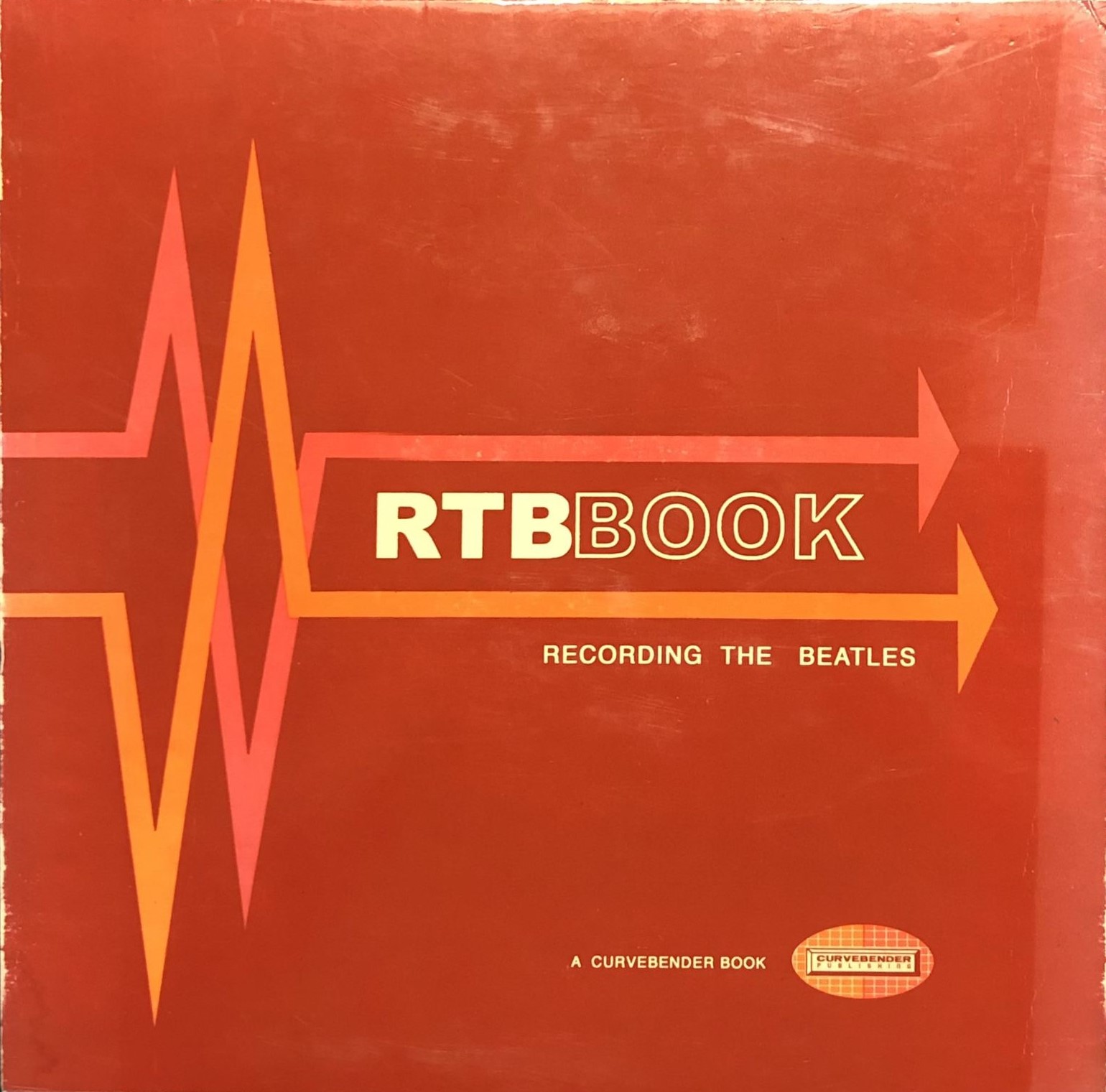 Once official recording began in EMI Studio Two on June 11th, 1968, Paul recorded 32 takes of the song with just himself on acoustic guitar and vocal along with his tapping feet which were specifically miked by Geoff Emerick at Paul's request. Geoff Emerick, in the book "Recording The Beatles," explains how the tapping on the finished recording "has been incorrectly identified as a metronome in the past," evidence of Paul's foot tapping during the playing of the song easily being seen in the Apple promo film shot on this day. Once official recording began in EMI Studio Two on June 11th, 1968, Paul recorded 32 takes of the song with just himself on acoustic guitar and vocal along with his tapping feet which were specifically miked by Geoff Emerick at Paul's request. Geoff Emerick, in the book "Recording The Beatles," explains how the tapping on the finished recording "has been incorrectly identified as a metronome in the past," evidence of Paul's foot tapping during the playing of the song easily being seen in the Apple promo film shot on this day.
 Two full four-track tapes were used in recording the song, a good portion of the first tape being filled with rehearsals. This, as well as there being a false ending in each complete performance, contributed to confusion as to which take was which. For instance, of the 11 complete takes recorded on this day, "take 23" was included on the compilation album “Anthology 3,” although the tape box identified it to be "take four." Upon examination of this take, we can see that Paul was still experimenting with the structure of the song as well as nuances of the performance itself. While this performance was very good, unwanted background noises deemed it unsuitable. Another complete take from this day, which has surfaced on bootleg recordings, shows Paul ending the song just after the beginning of a verse with the lyric “Blackbird singing in the dead of night.....” and then asking Geoff Emerick “What do you think, what do you think?” Two full four-track tapes were used in recording the song, a good portion of the first tape being filled with rehearsals. This, as well as there being a false ending in each complete performance, contributed to confusion as to which take was which. For instance, of the 11 complete takes recorded on this day, "take 23" was included on the compilation album “Anthology 3,” although the tape box identified it to be "take four." Upon examination of this take, we can see that Paul was still experimenting with the structure of the song as well as nuances of the performance itself. While this performance was very good, unwanted background noises deemed it unsuitable. Another complete take from this day, which has surfaced on bootleg recordings, shows Paul ending the song just after the beginning of a verse with the lyric “Blackbird singing in the dead of night.....” and then asking Geoff Emerick “What do you think, what do you think?”
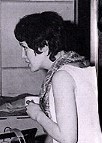 Despite the extended period of time he was putting in to get the perfect performance, he was trying hard to make his voice sound as unforced and casual as possible. "I've been trying to throw it away for the last hour," he stated after "take 16." "Take 28," which was mislabeled "take nine" on the second tape box, was included on the Super Deluxe box set of the "White Album" 50th Anniversary edition. The arrangement was yet again different on this take, ending with Paul staggering on his final lyric "dark black, dark black, dark black night." After the take is over, Paul instructs the engineering team, "Do you want to just keep a few that you think are worth it, you know? See, if we're ever to reach it, I'll be able to tell you when I've just done it. I don't know, you know?" Then he speaks to his girlfriend Francie Schwartz, "I should think so, it just needs forgetting about it," Francie replying, "yeah." Paul continues: "It's a decision which voice to use, you know. I think it's better quieter." Francie then confirms, "I do too." Despite the extended period of time he was putting in to get the perfect performance, he was trying hard to make his voice sound as unforced and casual as possible. "I've been trying to throw it away for the last hour," he stated after "take 16." "Take 28," which was mislabeled "take nine" on the second tape box, was included on the Super Deluxe box set of the "White Album" 50th Anniversary edition. The arrangement was yet again different on this take, ending with Paul staggering on his final lyric "dark black, dark black, dark black night." After the take is over, Paul instructs the engineering team, "Do you want to just keep a few that you think are worth it, you know? See, if we're ever to reach it, I'll be able to tell you when I've just done it. I don't know, you know?" Then he speaks to his girlfriend Francie Schwartz, "I should think so, it just needs forgetting about it," Francie replying, "yeah." Paul continues: "It's a decision which voice to use, you know. I think it's better quieter." Francie then confirms, "I do too."
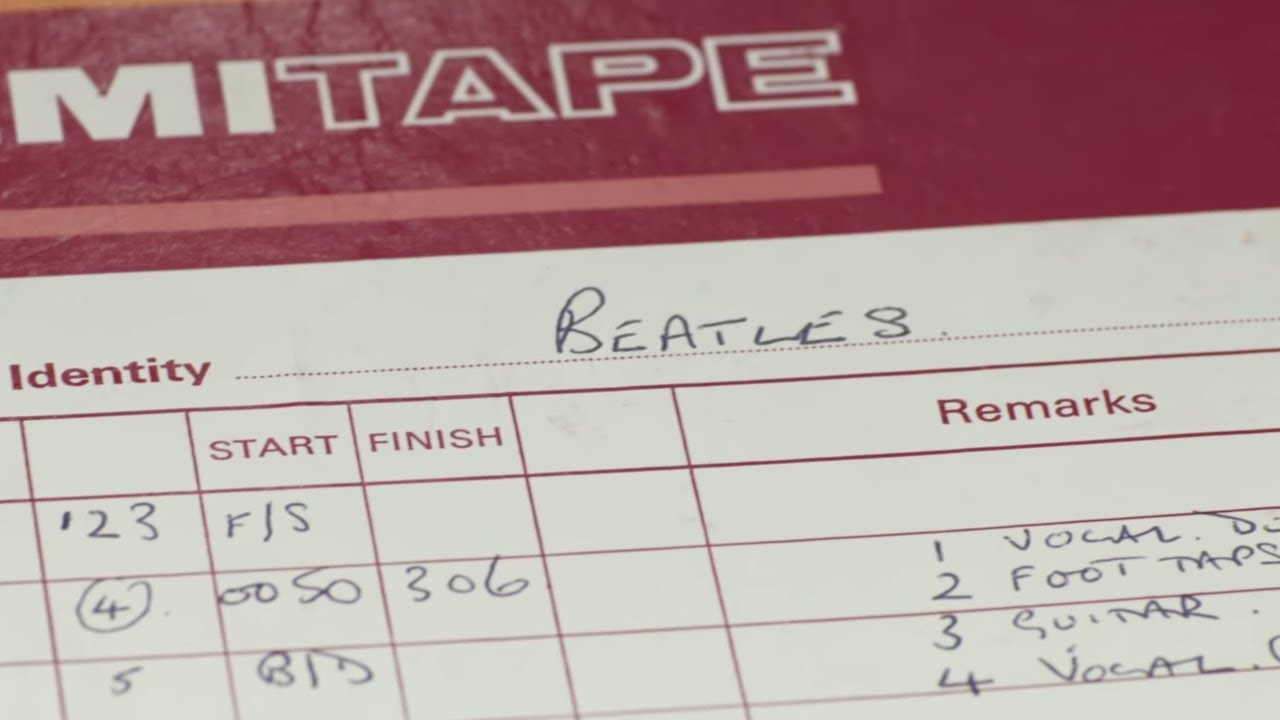 "Take 32" was the keeper, however, Paul then double-tracking his vocals during the refrains and adding another acoustic guitar during the middle instrumental section. The EMI tape box stipulates that Paul's original vocal from the rhythm track was on track one of the four-track tape, his foot tapping was on track two, his initial acoustic guitar was on track three, and his double-tracked vocal and guitar was on track four. Before this session was over, six attempts at the mono mix were made in the control room of EMI Studio Two by Geoff Emerick, although none of these were used on the released record. By 12:15 am, the session was complete. "Take 32" was the keeper, however, Paul then double-tracking his vocals during the refrains and adding another acoustic guitar during the middle instrumental section. The EMI tape box stipulates that Paul's original vocal from the rhythm track was on track one of the four-track tape, his foot tapping was on track two, his initial acoustic guitar was on track three, and his double-tracked vocal and guitar was on track four. Before this session was over, six attempts at the mono mix were made in the control room of EMI Studio Two by Geoff Emerick, although none of these were used on the released record. By 12:15 am, the session was complete.
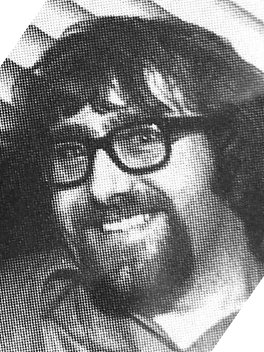 A simple tape copy of "remix mono 6" of “Blackbird” was made in the control room of EMI Studio Two on August 27th, 1968, this being considered the finished mono mix of the song at this time. This tape copy, along with three other tape copies made on this day, were taken away by roadie Mal Evans, no doubt to be reviewed by The Beatles. A simple tape copy of "remix mono 6" of “Blackbird” was made in the control room of EMI Studio Two on August 27th, 1968, this being considered the finished mono mix of the song at this time. This tape copy, along with three other tape copies made on this day, were taken away by roadie Mal Evans, no doubt to be reviewed by The Beatles.
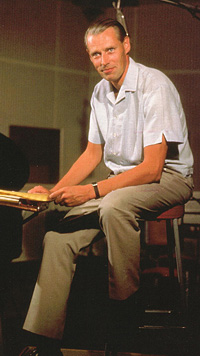 Both the stereo and mono mixes that were released to the public were made on October 13th, 1968, by George Martin and engineers Ken Scott and John Smith in the control room of EMI Studio Two. The stereo mix was done first, only one attempt each being needed for the stereo and mono mixes. The mono mix, for some reason, was designated “remix 10” even though only six mono mixes were attempted thus far. The only notable difference between the stereo and mono mixes is the placement of bird sound effects, which were added to the song at this mixing stage. The mono mix leaves the open space in the song completely quiet while the stereo mix includes the blackbirds from the sound-effects tape chirping nicely in the open space of the song. Both the stereo and mono mixes that were released to the public were made on October 13th, 1968, by George Martin and engineers Ken Scott and John Smith in the control room of EMI Studio Two. The stereo mix was done first, only one attempt each being needed for the stereo and mono mixes. The mono mix, for some reason, was designated “remix 10” even though only six mono mixes were attempted thus far. The only notable difference between the stereo and mono mixes is the placement of bird sound effects, which were added to the song at this mixing stage. The mono mix leaves the open space in the song completely quiet while the stereo mix includes the blackbirds from the sound-effects tape chirping nicely in the open space of the song.
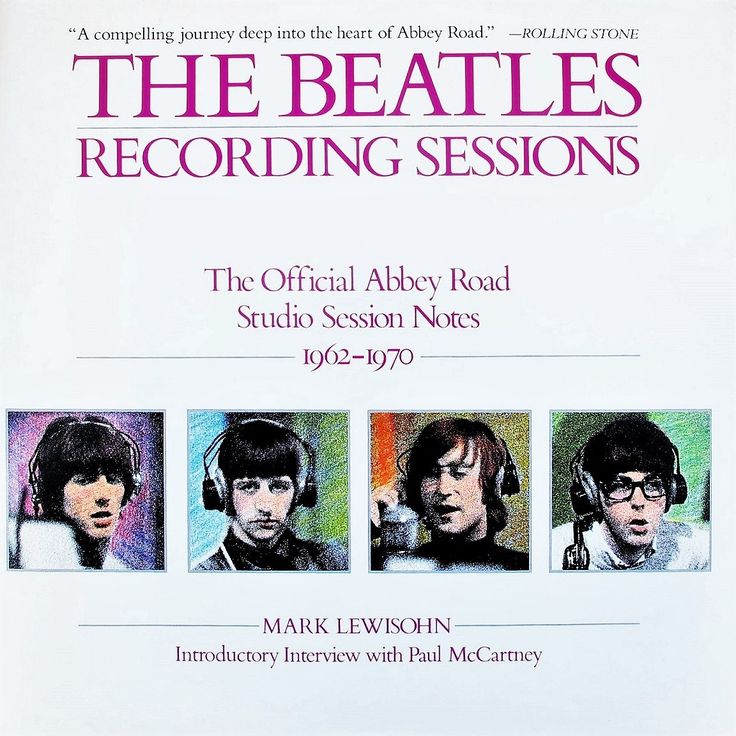 Mark Lewisohn, in his book “The Beatles Recording Sessions,” explains that these bird sound effects were "courtesy of 'Volume Seven: Birds Of Feather,' from the Abbey Road taped sound-effects collection." Stuart Eltham recalls: "I taped that on one of the first portable EMI tape-recorders, in my back garden in Ickenham, about 1965. There are two recordings, one of the bird singing, the other making an alarm sound when I startled it." Mark Lewisohn, in his book “The Beatles Recording Sessions,” explains that these bird sound effects were "courtesy of 'Volume Seven: Birds Of Feather,' from the Abbey Road taped sound-effects collection." Stuart Eltham recalls: "I taped that on one of the first portable EMI tape-recorders, in my back garden in Ickenham, about 1965. There are two recordings, one of the bird singing, the other making an alarm sound when I startled it."
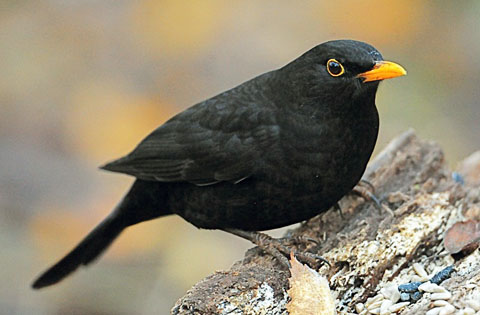 "EMI was such an all-encompassing record company of the old variety that they had a sound library in the same building as the studio," Paul explained in his 2021 book "The Lyrics." "If I wanted to include the sound of blackbirds singing on the song 'Blackbird,' I could just find it in the catalogue and order it, and someone would go up and get it from the library and bring it down to the studio. So we started messing around with this library, and it was very liberating." Paul then explains the desire to have this sound effect on the song: “The only point where we were thinking of putting anything on it was where it comes back in at the end – stops, and then comes back in. So, instead of putting any backing on it, we put a blackbird on it, so, there's a blackbird singing at the very end. Somebody said it's a thrush, but I think it's a blackbird...He did a very good job, I thought. He sings very well on that." Stuart Eltham, who made the actual recording of the bird in his back garden, confirms that it was, indeed, a blackbird. "EMI was such an all-encompassing record company of the old variety that they had a sound library in the same building as the studio," Paul explained in his 2021 book "The Lyrics." "If I wanted to include the sound of blackbirds singing on the song 'Blackbird,' I could just find it in the catalogue and order it, and someone would go up and get it from the library and bring it down to the studio. So we started messing around with this library, and it was very liberating." Paul then explains the desire to have this sound effect on the song: “The only point where we were thinking of putting anything on it was where it comes back in at the end – stops, and then comes back in. So, instead of putting any backing on it, we put a blackbird on it, so, there's a blackbird singing at the very end. Somebody said it's a thrush, but I think it's a blackbird...He did a very good job, I thought. He sings very well on that." Stuart Eltham, who made the actual recording of the bird in his back garden, confirms that it was, indeed, a blackbird.
 But why not make a bigger production of the song? Paul explains: “It's simple in concept because we couldn't even think of anything else to put on it. Maybe on 'Pepper,' we would have worked on it until we could find some way to put violins on it, or trumpets. But, I don't think it needs it. There's nothing to the song. This is just one of those pick-it-and-sing-it songs. It doesn't need anything else in the backing because, as a song, there's nothing to it." It appears that after George Martin left for the evening, his suggestions for an orchestral arrangement left with him. But why not make a bigger production of the song? Paul explains: “It's simple in concept because we couldn't even think of anything else to put on it. Maybe on 'Pepper,' we would have worked on it until we could find some way to put violins on it, or trumpets. But, I don't think it needs it. There's nothing to the song. This is just one of those pick-it-and-sing-it songs. It doesn't need anything else in the backing because, as a song, there's nothing to it." It appears that after George Martin left for the evening, his suggestions for an orchestral arrangement left with him.
 Sometime in January of 1969, during the recording of Mary Hopkin's album “Postcard,” Paul and British folk singer Donovan, both of whom performed on the album, were recorded singing and doodling on acoustic guitars while engineers were setting up equipment and adjusting the mix. Among the songs they ran through was “Blackbird,” Paul including a convincing blackbird imitation in between the vocal lines. He also stops the song at one point to explain to Donovan, "I sang the song to Diana Ross the other night – she took offence!...not really." Sometime in January of 1969, during the recording of Mary Hopkin's album “Postcard,” Paul and British folk singer Donovan, both of whom performed on the album, were recorded singing and doodling on acoustic guitars while engineers were setting up equipment and adjusting the mix. Among the songs they ran through was “Blackbird,” Paul including a convincing blackbird imitation in between the vocal lines. He also stops the song at one point to explain to Donovan, "I sang the song to Diana Ross the other night – she took offence!...not really."
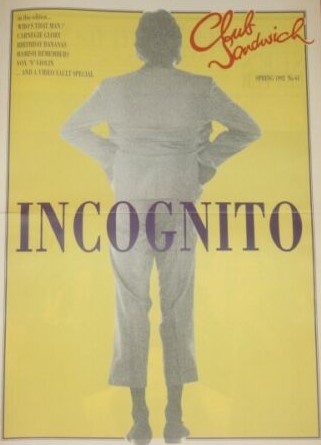 As mentioned above, another recording session containing the song "Blackbird" occurred on August 30th, 1974, this being at Elstree Studio in Borhamwood, Hertfordshire near London for a Wings film initially entitled "The Backyard," the audio of which eventually being relaeased as "One Hand Clapping" on April 16th, 2024. As detailed in the Spring 1992 #61 edition of Club Sandwich magazine, "One fine day Paul suggested that it would be fun to work outside and scouted around for a local location. The area he chose was the grubby yard behind the echo chamber at the studios, clogged with rusting bits and pieces save for a tiny patch of unfettered grass. This was it - Paul grabbed a chair from the studio, slung his jacket across the back and plonked himself down. There was no room for anyone else so it became a solo spot." Since Beatles engineer Geoff Emerick was also involved in this production, along with Mark Vigars and John Barrett, and Paul performed at least four takes of "Blackbird" during this impromptu session, it is easy to conclude that Geoff Emerick confused this occasion with the actual EMI recording of the song taking place in a "little spot outside of the echo chamber" as detailed above in his book "Here, There And Everywhere." An understandable mistake! As mentioned above, another recording session containing the song "Blackbird" occurred on August 30th, 1974, this being at Elstree Studio in Borhamwood, Hertfordshire near London for a Wings film initially entitled "The Backyard," the audio of which eventually being relaeased as "One Hand Clapping" on April 16th, 2024. As detailed in the Spring 1992 #61 edition of Club Sandwich magazine, "One fine day Paul suggested that it would be fun to work outside and scouted around for a local location. The area he chose was the grubby yard behind the echo chamber at the studios, clogged with rusting bits and pieces save for a tiny patch of unfettered grass. This was it - Paul grabbed a chair from the studio, slung his jacket across the back and plonked himself down. There was no room for anyone else so it became a solo spot." Since Beatles engineer Geoff Emerick was also involved in this production, along with Mark Vigars and John Barrett, and Paul performed at least four takes of "Blackbird" during this impromptu session, it is easy to conclude that Geoff Emerick confused this occasion with the actual EMI recording of the song taking place in a "little spot outside of the echo chamber" as detailed above in his book "Here, There And Everywhere." An understandable mistake!
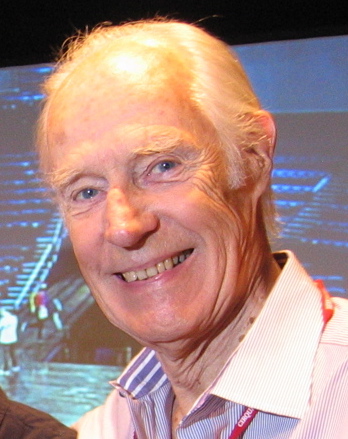 Sometime in 1996, George Martin and Geoff Emerick returned to the master tapes of “Blackbird” to create a stereo mix of "take 23" as mentioned above. This was included on the compilation album “Anthology 3” to give a clear perspective of how the song was recorded. Sometime in 1996, George Martin and Geoff Emerick returned to the master tapes of “Blackbird” to create a stereo mix of "take 23" as mentioned above. This was included on the compilation album “Anthology 3” to give a clear perspective of how the song was recorded.
 And then, sometime between 2004 and 2006, George Martin and his son Giles Martin worked with the master tape of “Blackbird” in order to combine a few instrumental segments with the master tape of “Yesterday,” this becoming the track “Blackbird” / ”Yesterday” on the compilation album “Love.” The key of “Blackbird” was lowered so as to match the key of “Yesterday,” seamlessly splicing them all together to appear as if it was performed by Paul all at the same time. A masterful job. And then, sometime between 2004 and 2006, George Martin and his son Giles Martin worked with the master tape of “Blackbird” in order to combine a few instrumental segments with the master tape of “Yesterday,” this becoming the track “Blackbird” / ”Yesterday” on the compilation album “Love.” The key of “Blackbird” was lowered so as to match the key of “Yesterday,” seamlessly splicing them all together to appear as if it was performed by Paul all at the same time. A masterful job.
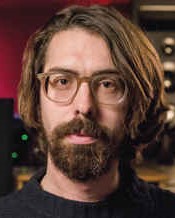 Giles Martin then returned to the master tapes, along with engineer Sam Okell, to create a vibrant new stereo mix of the song for inclusion on the various editions of the 50th Anniversary of the "White Album." They did a remarkable job in mixing in the blackbird sound effects in the correct places as heard on the original stereo mix. They also created stereo mixes of both the Esher demo Paul recorded in May of 1968 and "take 28" as recorded in EMI Studios on June 11th, 1968, complete with his brief dialog with girlfriend Francie Schwartz. Giles Martin then returned to the master tapes, along with engineer Sam Okell, to create a vibrant new stereo mix of the song for inclusion on the various editions of the 50th Anniversary of the "White Album." They did a remarkable job in mixing in the blackbird sound effects in the correct places as heard on the original stereo mix. They also created stereo mixes of both the Esher demo Paul recorded in May of 1968 and "take 28" as recorded in EMI Studios on June 11th, 1968, complete with his brief dialog with girlfriend Francie Schwartz.
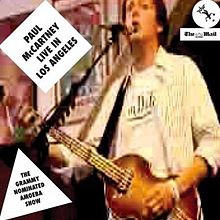 Since Paul performed “Blackbird” live quite regularly throughout the years, many recordings have been made and have surfaced on live albums. The first was made on Made sometime in May or June of 1976, a recording of the song was released on the album “Wings Over America,” while another version of the song that was recorded on June 14th, 1976 at the Cow Palace in Daly City, California was included on a bonus CD in the Deluxe Edition Box Set of “Wings Over America.” On January 25th, 1991, Paul and his band performed the song on the MTV “Unplugged” show, this version appearing on his album “Unplugged (The Official Bootleg).” Then, sometime between April 1st and May 18th, 2002, “Blackbird” was recorded live for release on both “Back In The US” and “Back In The World.” A recording of the song was made at Paul's June 27th, 2007 concert at Amoeba Music in Hollywood, California, this version appearing on the British and Irish release entitled “Paul McCartney Live In Los Angeles” and eventually on the US released album "Amoeba Gig." Another recording made at Citi Field in New York City sometime between July 17th ans 21st, 2009 made it onto the album “Good Evening New York City.” Since Paul performed “Blackbird” live quite regularly throughout the years, many recordings have been made and have surfaced on live albums. The first was made on Made sometime in May or June of 1976, a recording of the song was released on the album “Wings Over America,” while another version of the song that was recorded on June 14th, 1976 at the Cow Palace in Daly City, California was included on a bonus CD in the Deluxe Edition Box Set of “Wings Over America.” On January 25th, 1991, Paul and his band performed the song on the MTV “Unplugged” show, this version appearing on his album “Unplugged (The Official Bootleg).” Then, sometime between April 1st and May 18th, 2002, “Blackbird” was recorded live for release on both “Back In The US” and “Back In The World.” A recording of the song was made at Paul's June 27th, 2007 concert at Amoeba Music in Hollywood, California, this version appearing on the British and Irish release entitled “Paul McCartney Live In Los Angeles” and eventually on the US released album "Amoeba Gig." Another recording made at Citi Field in New York City sometime between July 17th ans 21st, 2009 made it onto the album “Good Evening New York City.”
Song Structure and Style
Since "Blackbird" was a solo performance, Paul took to experimenting with the structure of the song as he was recording it, various configurations being tried and abandoned before he settled on what we've come to view as the finished structure. What he ended up with was the following: 'verse/ verse/ refrain/ verse (instrumental)/ refrain/ bridge/ verse' (or aababca). Interestingly, Paul continues to deviate from this structure to this day, each live performance varying from the next with subtle lyrical differences as well.
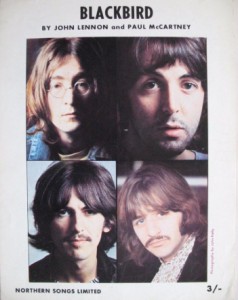 As far as the official studio recording is concerned, the arrangement is the same throughout; Paul on acoustic guitar and single tracked vocals except during the refrains which have double-tracked vocals. His tapping feet are audible until the end of the second refrain just before the song ritards and stops momentarily, but then reappear on the bridge and continue until the song is near completion. During the momentary break, the blackbird sound effects kick in (they come in a little earlier in the mono mix) and reappear periodically throughout the rest of the song, the last blackbird being heard just after the song is completed. As far as the official studio recording is concerned, the arrangement is the same throughout; Paul on acoustic guitar and single tracked vocals except during the refrains which have double-tracked vocals. His tapping feet are audible until the end of the second refrain just before the song ritards and stops momentarily, but then reappear on the bridge and continue until the song is near completion. During the momentary break, the blackbird sound effects kick in (they come in a little earlier in the mono mix) and reappear periodically throughout the rest of the song, the last blackbird being heard just after the song is completed.
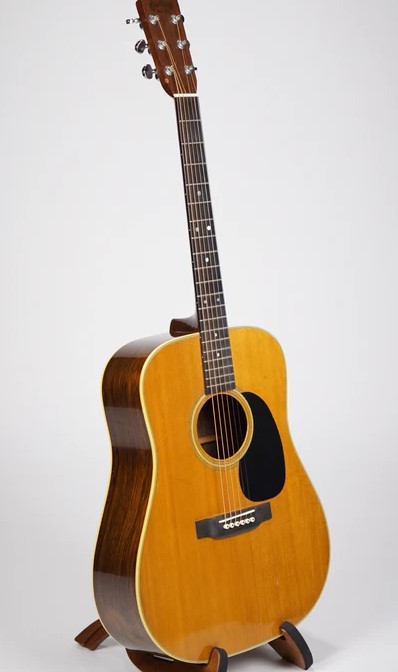 The more complex feature of the song is the time signature changes that wind through the structure that Paul ended up using. For instance, a two-measure introduction begins the piece, which is actually an instrumental foregleam of the first two measures of each verse. The first of these two measures is in 3/4 while the second measure is in a standard 4/4 time, which is the primary time signature of the song. The first verse then follows, which is ten measures long, the first measure being in 3/4 time, measures two through four in 4/4 time, measure five in 2/4 time, and measures six through ten in 4/4 time. The final two measures (nine and ten) are actually an instrumental repeat of the previous two measures (seven and eight). Kapeesh? The more complex feature of the song is the time signature changes that wind through the structure that Paul ended up using. For instance, a two-measure introduction begins the piece, which is actually an instrumental foregleam of the first two measures of each verse. The first of these two measures is in 3/4 while the second measure is in a standard 4/4 time, which is the primary time signature of the song. The first verse then follows, which is ten measures long, the first measure being in 3/4 time, measures two through four in 4/4 time, measure five in 2/4 time, and measures six through ten in 4/4 time. The final two measures (nine and ten) are actually an instrumental repeat of the previous two measures (seven and eight). Kapeesh?
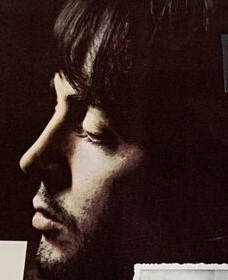 The second verse is then heard which is the same by all accounts except that it is only eight measures long, omitting the final two instrumental measures heard in the first verse. Then comes the refrain which is five measures long, measures one through four being in 4/4 time while the fifth measure is in 2/4 time. The final lyrical line of the refrain (“into the light of the dark black night”) extends into the next section of the song, which is a fully instrumental verse eight measures in length as the second verse was. The second verse is then heard which is the same by all accounts except that it is only eight measures long, omitting the final two instrumental measures heard in the first verse. Then comes the refrain which is five measures long, measures one through four being in 4/4 time while the fifth measure is in 2/4 time. The final lyrical line of the refrain (“into the light of the dark black night”) extends into the next section of the song, which is a fully instrumental verse eight measures in length as the second verse was.
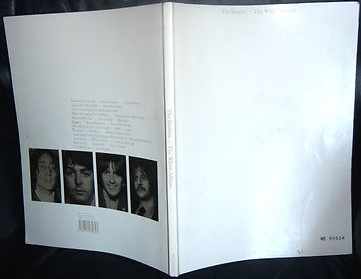 The second refrain is heard next which is extended to nine measures in length. The first five measures are identical to the first refrain while measures six and seven repeat the introduction of the song but then extend the final high chord for two more measures of 4/4 while the song slows down to a grinding halt. When the song picks up again, we hear a section that is different from anything else heard in the song, which we'll call a bridge. This bridge is instrumental and consists of three measures, the first two being in 3/4 time and the third measure being in 2/4 time. The second refrain is heard next which is extended to nine measures in length. The first five measures are identical to the first refrain while measures six and seven repeat the introduction of the song but then extend the final high chord for two more measures of 4/4 while the song slows down to a grinding halt. When the song picks up again, we hear a section that is different from anything else heard in the song, which we'll call a bridge. This bridge is instrumental and consists of three measures, the first two being in 3/4 time and the third measure being in 2/4 time.
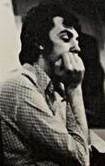 Paul then goes into the final vocal verse, which is lyrically the same as the first. However, with this being the final segment of the song, he extends it to twelve measures, repeating the final two 4/4 measures twice. This means we hear the lyric “you were only waiting for this moment to arise” three times in a row for emphasis. And that's that! Paul then goes into the final vocal verse, which is lyrically the same as the first. However, with this being the final segment of the song, he extends it to twelve measures, repeating the final two 4/4 measures twice. This means we hear the lyric “you were only waiting for this moment to arise” three times in a row for emphasis. And that's that!
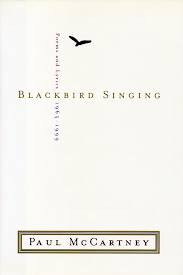 English playwright and poet Adrian Mitchell, when asked to edit a collection of McCartney's poetry for publication in 2001 entitled "Blackbird Singing: Poems and Lyrics 1965 - 1999," insisted on including a number of Paul's song lyrics as well as his poems. "A few songwriters," Adrian Mitchell writes, "have a vision and try to convey it to us. A few manage to write truthfully about the world - as Paul does. He knows the value of words, how they can help us to enjoy living and loving. I love the tune 'Blackbird.' And the words are just beautifully balanced and poised (as poetry). I think it works on both levels. I believe William Blake would be perfectly happy to be thought of alongside The Beatles." English playwright and poet Adrian Mitchell, when asked to edit a collection of McCartney's poetry for publication in 2001 entitled "Blackbird Singing: Poems and Lyrics 1965 - 1999," insisted on including a number of Paul's song lyrics as well as his poems. "A few songwriters," Adrian Mitchell writes, "have a vision and try to convey it to us. A few manage to write truthfully about the world - as Paul does. He knows the value of words, how they can help us to enjoy living and loving. I love the tune 'Blackbird.' And the words are just beautifully balanced and poised (as poetry). I think it works on both levels. I believe William Blake would be perfectly happy to be thought of alongside The Beatles."
American Releases
The Beatles' highly awaited double-album entitled "The Beatles" (aka the "White Album") was released in the US on November 25th, 1968. "Blackbird" appeared as the third track on side two just after the indecipherable mumblings of John Lennon at the end of "I'm So Tired." The album got its first compact disc release on August 24th, 1987 and then a sonically modified CD version of the album was released as a 30th Anniversary edition on November 23rd, 1998. A remastered version of the CD came out on September 9th, 2009 and the first mono vinyl release in the US came out on November 9th, 2014. A vibrant new stereo mix of the "White Album" was also released on vinyl on November 9th, 2018.
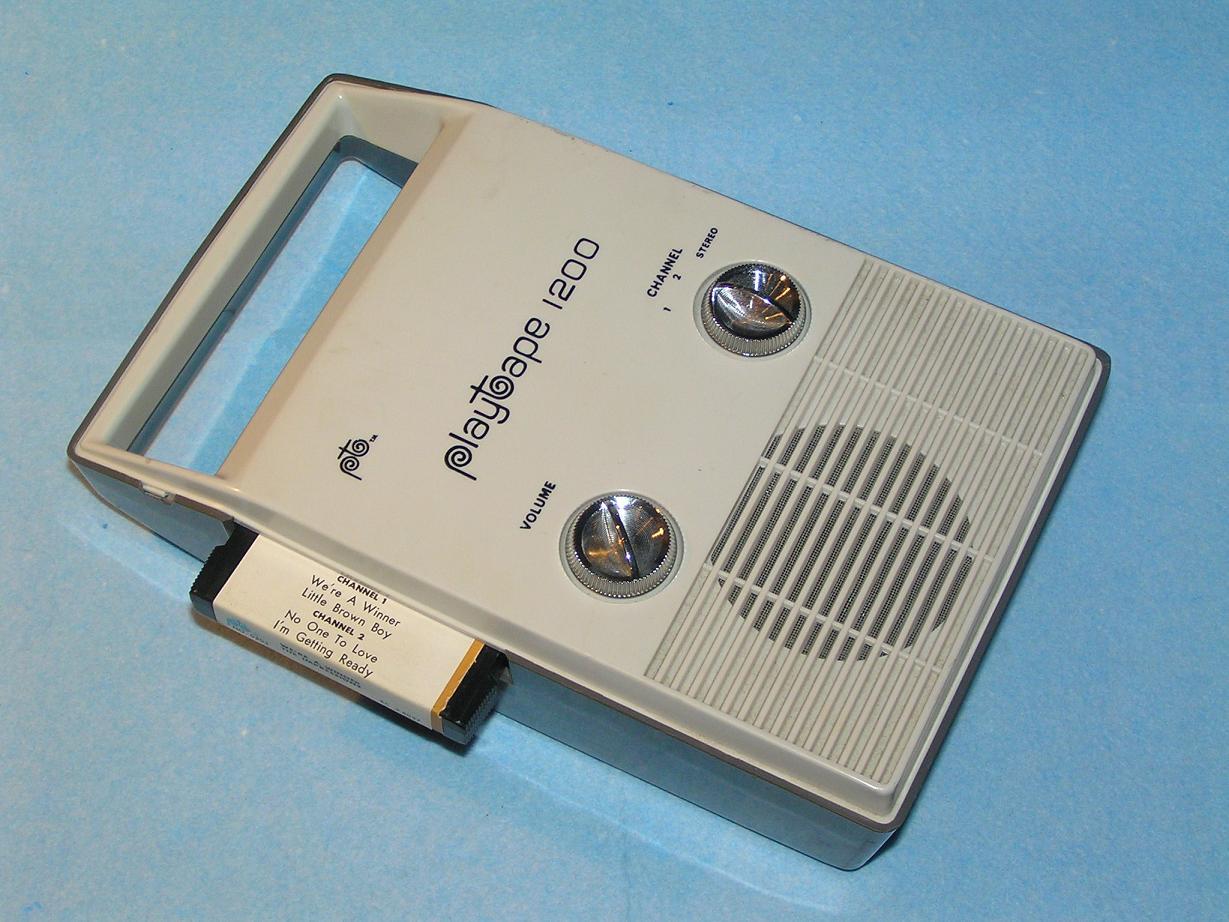 In early 1969, Capitol released a five-song “Playtape” of songs from the “White Album” entitled “The Beatles Vol. II,” this song being one of the selections (labeled as “Black Bird”). This release was one of five tapes released to encompass as many of the songs from the album as possible for this short-lived format which, incidentally, ceased to exist later that same year. In early 1969, Capitol released a five-song “Playtape” of songs from the “White Album” entitled “The Beatles Vol. II,” this song being one of the selections (labeled as “Black Bird”). This release was one of five tapes released to encompass as many of the songs from the album as possible for this short-lived format which, incidentally, ceased to exist later that same year.
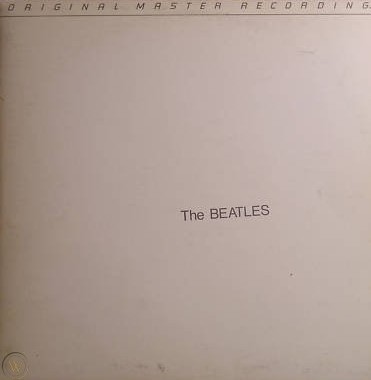 An interesting US vinyl edition of the “White Album” was released on January 7th, 1982, this being manufactured by Mobile Fidelity Sound Lab in Chatsworth, California as part of their "Original Master Recording" series. Their practice was to prepare a new master utilizing half-speed mastering technology from the original master tapes, in this case using the leased sub-master from Capitol Records. This release, which sounded superior to all previous British and American pressings, was packaged in a non-embossed unnumbered cover that did not include the usual poster/lyric sheet or individual Beatles portraits as contained in standard releases. This nonetheless excellent edition of the album was only available for a short time and is quite collectible today. An interesting US vinyl edition of the “White Album” was released on January 7th, 1982, this being manufactured by Mobile Fidelity Sound Lab in Chatsworth, California as part of their "Original Master Recording" series. Their practice was to prepare a new master utilizing half-speed mastering technology from the original master tapes, in this case using the leased sub-master from Capitol Records. This release, which sounded superior to all previous British and American pressings, was packaged in a non-embossed unnumbered cover that did not include the usual poster/lyric sheet or individual Beatles portraits as contained in standard releases. This nonetheless excellent edition of the album was only available for a short time and is quite collectible today.
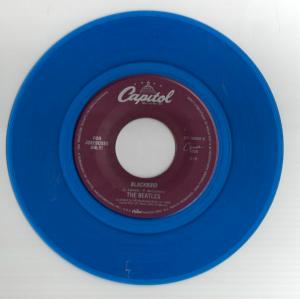 Many fans may not realize that “Blackbird” did indeed get released as a single, as the b-side of a “For Jukeboxes Only” 45 on the Capitol Cema label on January 24th, 1996. The a-side was another “White Album” track, “While My Guitar Gently Weeps,” the single being pressed on blue vinyl. Many fans may not realize that “Blackbird” did indeed get released as a single, as the b-side of a “For Jukeboxes Only” 45 on the Capitol Cema label on January 24th, 1996. The a-side was another “White Album” track, “While My Guitar Gently Weeps,” the single being pressed on blue vinyl.
The above mentioned “Anthology 3” album, which featured Paul's solo recording of "take four" of the song as recorded on June 11th, 1968, was officially released on October 28th, 1996.
The first appearance of the mono version of “Blackbird” in the US was on the CD box set “The Beatles In Mono,” which contained the entire Beatles catalog as originally released in mono. This CD box set was released on September 9th, 2009, the vinyl edition being first released on September 9th, 2014.
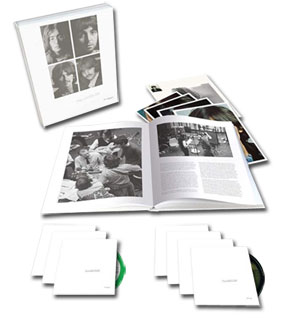 Various editions of the "White Album" were released on November 9th, 2018 to commemorate the 50th Anniversary of its original release. The "Deluxe" edition, which was made available in a 3CD set and a limited edition 180-gram 4LP vinyl set, contained the newly created Giles Martin mix of the "White Album" as well as the complete set of Esher demos that The Beatles recorded in late May of 1968. The "Super Deluxe" 6CD + 1Blu-ray edition also contains the never-before-heard "take 28" of "Blackbird" as recorded on June 11th, 1968. Various editions of the "White Album" were released on November 9th, 2018 to commemorate the 50th Anniversary of its original release. The "Deluxe" edition, which was made available in a 3CD set and a limited edition 180-gram 4LP vinyl set, contained the newly created Giles Martin mix of the "White Album" as well as the complete set of Esher demos that The Beatles recorded in late May of 1968. The "Super Deluxe" 6CD + 1Blu-ray edition also contains the never-before-heard "take 28" of "Blackbird" as recorded on June 11th, 1968.
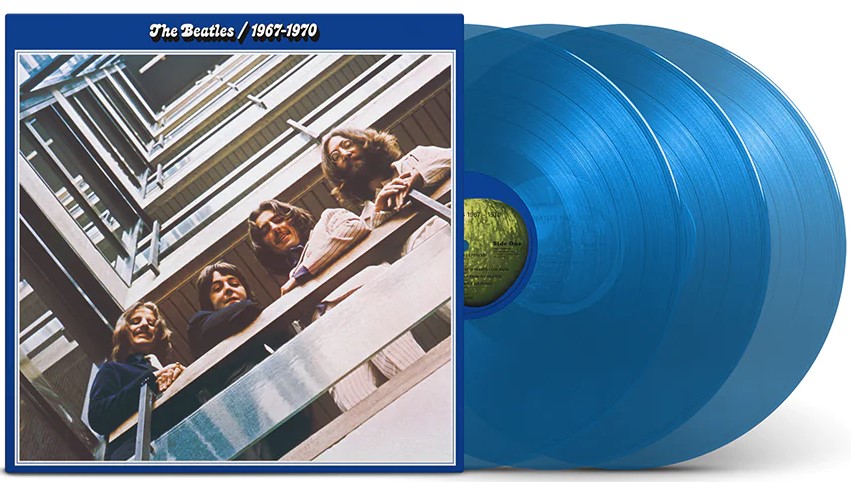 A 50th Anniversay edition of the compilation album "The Beatles / 1967 - 1970" (aka "The Blue Album") was released on November 10th, 2023. This expanded release included 12 additional songs for a total of 38 tracks, including the new mix of "Piggies" detailed above, and was made available as a double CD and as a triple vinyl release on both black and blue vinyl. A 50th Anniversay edition of the compilation album "The Beatles / 1967 - 1970" (aka "The Blue Album") was released on November 10th, 2023. This expanded release included 12 additional songs for a total of 38 tracks, including the new mix of "Piggies" detailed above, and was made available as a double CD and as a triple vinyl release on both black and blue vinyl.
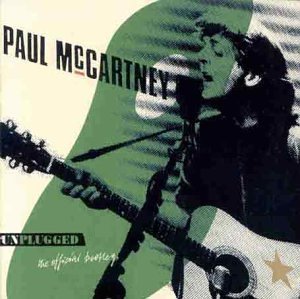 Also as mentioned above, the following US Paul McCartney live albums contain versions of “Blackbird”: “Wings Over America” (released December 10th, 1976), “Unplugged (The Official Bootleg)” (released June 4th, 1991), “Back In The US” (released November 11th, 2002), “Good Evening New York City” (released November 17th, 2009) and "Amoeba Gig" (released July 12th, 2019). In addition to these, an EP contained in the vinyl edition of "One Hand Clapping," released on July 17th, 2024, features various takes of an impromptu outdoor recording of "Blackbird" from August 30th, 1974 as detailed above. Also as mentioned above, the following US Paul McCartney live albums contain versions of “Blackbird”: “Wings Over America” (released December 10th, 1976), “Unplugged (The Official Bootleg)” (released June 4th, 1991), “Back In The US” (released November 11th, 2002), “Good Evening New York City” (released November 17th, 2009) and "Amoeba Gig" (released July 12th, 2019). In addition to these, an EP contained in the vinyl edition of "One Hand Clapping," released on July 17th, 2024, features various takes of an impromptu outdoor recording of "Blackbird" from August 30th, 1974 as detailed above.
Live Performances
What could rightfully be called the first ever performance of "Blackbird" happened at an estimated date of June 1st, 1968. Apple Records Office Manager Alistair Taylor explains: "The first time I ever heard 'Blackbird' was when Paul and I were walking up Abbey Road at about three in the morning, and he had his acoustic guitar on, swung over his shoulder on a piece of string...There were two fans following us as we got to the corner of Cavendish Avenue, where we stood under the gas lamp that was there. Suddenly, he said, 'Hey, have a listen to this.' He got his acoustic and he sang 'Blackbird' to me, and it was incredible! It was marvellous!"
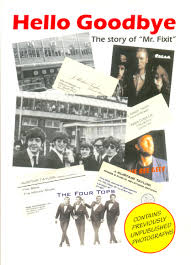 Alistair Taylor continues, as related in the book "Hello Goodbye: Thew Story Of 'Mr. Fixit,'": “Then, about six weeks later, he brought me an acetate and he said, 'There you go, that's that song I sang to you,' and it was awful! It was typical McCartney, beautiful and simple, in the way that he had done it, but, it was not the song he had sung to me. So, I told him this and he said, 'Oh, dear,' and he went away and he came back and said, 'I've redone it,' and he had put bird noises on it. Paul hates empty spaces on his songs. I said, 'Paul, you've got to be kidding!' It's still not right to this day.” That, of course, is his opinion. Alistair Taylor continues, as related in the book "Hello Goodbye: Thew Story Of 'Mr. Fixit,'": “Then, about six weeks later, he brought me an acetate and he said, 'There you go, that's that song I sang to you,' and it was awful! It was typical McCartney, beautiful and simple, in the way that he had done it, but, it was not the song he had sung to me. So, I told him this and he said, 'Oh, dear,' and he went away and he came back and said, 'I've redone it,' and he had put bird noises on it. Paul hates empty spaces on his songs. I said, 'Paul, you've got to be kidding!' It's still not right to this day.” That, of course, is his opinion.
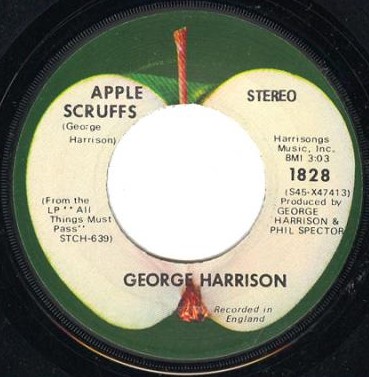 About three-and-a-half months after this preview of the song to Alistair Taylor, Paul gave an impromptu performance of the song to some fans gathered outside his home on a warm September evening of 1968. These fans were affectionately referred to by the band as “Apple Scruffs,” a subject matter that George Harrison wrote a song about for his 1970 album “All Things Must Pass.” One of these fans was Margo Stevens who, with many others, would regularly congregate outside the Apple offices in Savile Row as well as Paul's home in St. Johns Wood. About three-and-a-half months after this preview of the song to Alistair Taylor, Paul gave an impromptu performance of the song to some fans gathered outside his home on a warm September evening of 1968. These fans were affectionately referred to by the band as “Apple Scruffs,” a subject matter that George Harrison wrote a song about for his 1970 album “All Things Must Pass.” One of these fans was Margo Stevens who, with many others, would regularly congregate outside the Apple offices in Savile Row as well as Paul's home in St. Johns Wood.
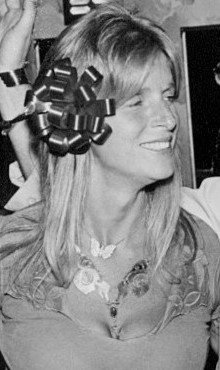 This particular evening was quite eventful for more than one reason. This was the first night that Linda Eastman, soon to be Paul's wife, was invited up to London to stay at his house. “She arrived the night when we were doing 'Happiness Is A Warm Gun,'” Paul remembered in his book “Many Years From Now.” Since this song was recorded between September 23rd and 26th, 1968, we can deduce that this event happened on one of these nights. This particular evening was quite eventful for more than one reason. This was the first night that Linda Eastman, soon to be Paul's wife, was invited up to London to stay at his house. “She arrived the night when we were doing 'Happiness Is A Warm Gun,'” Paul remembered in his book “Many Years From Now.” Since this song was recorded between September 23rd and 26th, 1968, we can deduce that this event happened on one of these nights.
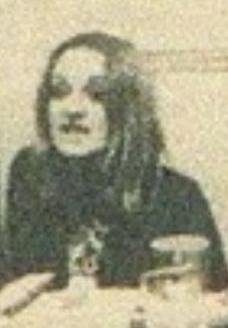 In Philip Norman's book “Shout!,” Margo Stevens relates: "A few of us were there. We had the feeling something was going to happen. Paul didn't take the Mini (Cooper) inside the way he usually did – he parked it on the road and he and Linda walked right past us. They went inside and we stood there, watching different lights in the house go on and off. In the end, the light went on in the Mad Room, at the top of the house, where he kept all his music stuff and his toys. Paul opened the window and called out to us, 'Are you still down there?' 'Yes,' we said. He must have been really happy that night. He sat on the windowsill with his acoustic guitar and sang 'Blackbird' to us, standing down there in the dark." In Philip Norman's book “Shout!,” Margo Stevens relates: "A few of us were there. We had the feeling something was going to happen. Paul didn't take the Mini (Cooper) inside the way he usually did – he parked it on the road and he and Linda walked right past us. They went inside and we stood there, watching different lights in the house go on and off. In the end, the light went on in the Mad Room, at the top of the house, where he kept all his music stuff and his toys. Paul opened the window and called out to us, 'Are you still down there?' 'Yes,' we said. He must have been really happy that night. He sat on the windowsill with his acoustic guitar and sang 'Blackbird' to us, standing down there in the dark."
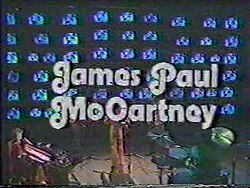 McCartney never had an opportunity to bring “Blackbird” to a concert stage during his Beatles career since they had stopped touring well before the song was recorded. After their break up, however, Paul has continued to perform it regularly on tour. The first time was sometime in February or March of 1973 while filming a segment of his TV program "James Paul McCartney" at ATV Elstree Studios in Borehamwood, Hertfordshire, England. Paul performed the song acoustically as part of a filmed medley while his wife Linda acted as photographer. The television special aired in the US on April 16th, 1973. McCartney never had an opportunity to bring “Blackbird” to a concert stage during his Beatles career since they had stopped touring well before the song was recorded. After their break up, however, Paul has continued to perform it regularly on tour. The first time was sometime in February or March of 1973 while filming a segment of his TV program "James Paul McCartney" at ATV Elstree Studios in Borehamwood, Hertfordshire, England. Paul performed the song acoustically as part of a filmed medley while his wife Linda acted as photographer. The television special aired in the US on April 16th, 1973.
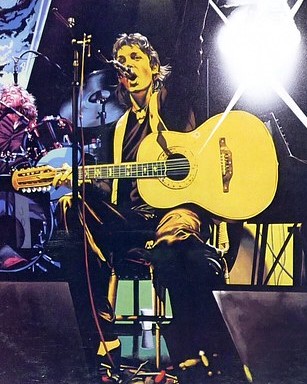 Afterwards, the following McCartney tours included “Blackbird” in their set lists: “Wings Over The World” (Sept. 9th, 1975 through Oct. 21st, 1976), “Driving World Tour” (April 1st through Nov. 18th, 2002), “Back In The World” (March 25th through June 1st, 2003), “2004 Summer Tour” (May 25th through June 26th, 2004), “The 'US' Tour” (Sept. 16th through Nov. 30th, 2005), his brief "Secret Tour" of 2007, “Summer Live '09” (July 17th through Aug. 19th, 2009), “Good Evening Europe Tour” (Dec. 2nd through 22nd, 2009), “Up And Coming Tour” (March 28th, 2010 through June 10th, 2011), “On The Run Tour” (July 15th, 2011 through November 29th, 2012) and his “Out There Tour” (May 4th, 2013 through Oct. 22nd, 2015), his "One On One" tour (April 13th, 2016 through Dec. 16th, 2017), his "Freshen Up" tour (Sept. 17th, 2018 through July 13th, 2019), and his "Got Back" tour (April 28th, 2022 through December 19th, 2024). Afterwards, the following McCartney tours included “Blackbird” in their set lists: “Wings Over The World” (Sept. 9th, 1975 through Oct. 21st, 1976), “Driving World Tour” (April 1st through Nov. 18th, 2002), “Back In The World” (March 25th through June 1st, 2003), “2004 Summer Tour” (May 25th through June 26th, 2004), “The 'US' Tour” (Sept. 16th through Nov. 30th, 2005), his brief "Secret Tour" of 2007, “Summer Live '09” (July 17th through Aug. 19th, 2009), “Good Evening Europe Tour” (Dec. 2nd through 22nd, 2009), “Up And Coming Tour” (March 28th, 2010 through June 10th, 2011), “On The Run Tour” (July 15th, 2011 through November 29th, 2012) and his “Out There Tour” (May 4th, 2013 through Oct. 22nd, 2015), his "One On One" tour (April 13th, 2016 through Dec. 16th, 2017), his "Freshen Up" tour (Sept. 17th, 2018 through July 13th, 2019), and his "Got Back" tour (April 28th, 2022 through December 19th, 2024).
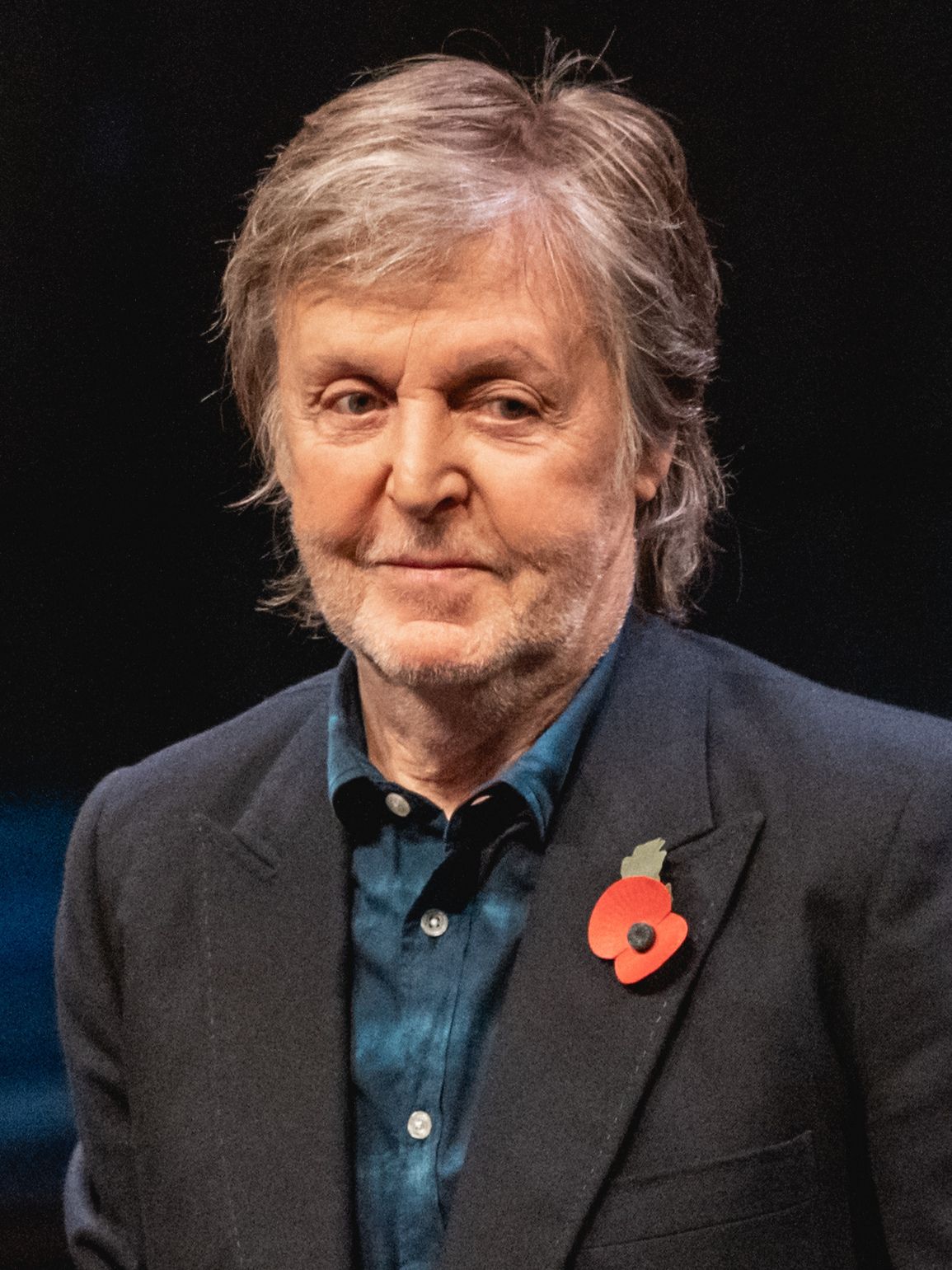 "I started to do a lot more in the way of contextualizing the songs in my regular concerts by telling some of the stories behind them," McCartney explained is his book "The Lyrics" concerning his vocal introduction to the song "Blackbird" at his shows. "I think audiences really apreciate finding an angle into the planetary atmosphere of the song, by getting to see the far side of the moon." "I started to do a lot more in the way of contextualizing the songs in my regular concerts by telling some of the stories behind them," McCartney explained is his book "The Lyrics" concerning his vocal introduction to the song "Blackbird" at his shows. "I think audiences really apreciate finding an angle into the planetary atmosphere of the song, by getting to see the far side of the moon."
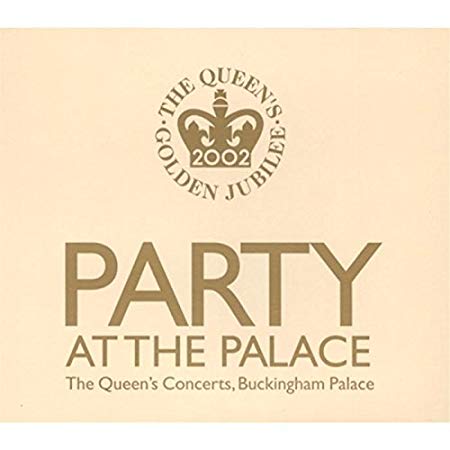 Paul also performed "Blackbird" during the "Golden Jubilee of Queen Elizabeth II" on June 3rd, 2002 in London with the Queen herself in the audience, this event called "Party At The Palace." He then played the song at the Coachella Valley (California) Music And Arts Festival on April 17th, 2009, explaining before playing the song about its inspiration being the civil rights movement of the '60s and commenting, "It's so great to realize so many civil rights issues have been overcome." Paul also performed "Blackbird" during the "Golden Jubilee of Queen Elizabeth II" on June 3rd, 2002 in London with the Queen herself in the audience, this event called "Party At The Palace." He then played the song at the Coachella Valley (California) Music And Arts Festival on April 17th, 2009, explaining before playing the song about its inspiration being the civil rights movement of the '60s and commenting, "It's so great to realize so many civil rights issues have been overcome."
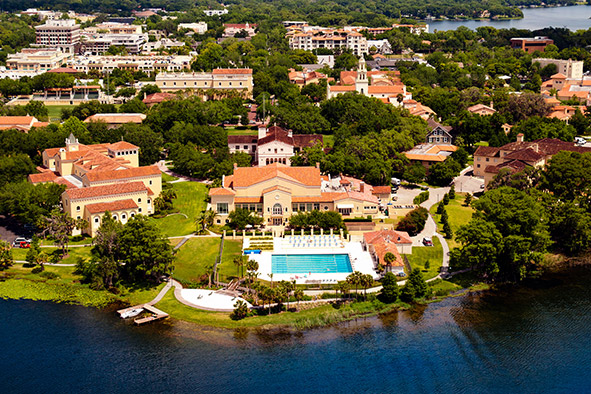 An impromptu performance of the song was at Rollins College in Winter Park, Florida on October 23rd, 2014. Paul was invited by the two-term US Poet Laureate Billy Collins to give an hour-long presentation in front of the students and faculty about his influences, his education, and the art of songwriting. At the conclusion of the interview, Paul was asked to perform a song, he opting to play “Blackbird” since he had earlier given his experience about how the song was written. The students' standing ovation afterward shows they must have enjoyed it somewhat. An impromptu performance of the song was at Rollins College in Winter Park, Florida on October 23rd, 2014. Paul was invited by the two-term US Poet Laureate Billy Collins to give an hour-long presentation in front of the students and faculty about his influences, his education, and the art of songwriting. At the conclusion of the interview, Paul was asked to perform a song, he opting to play “Blackbird” since he had earlier given his experience about how the song was written. The students' standing ovation afterward shows they must have enjoyed it somewhat.
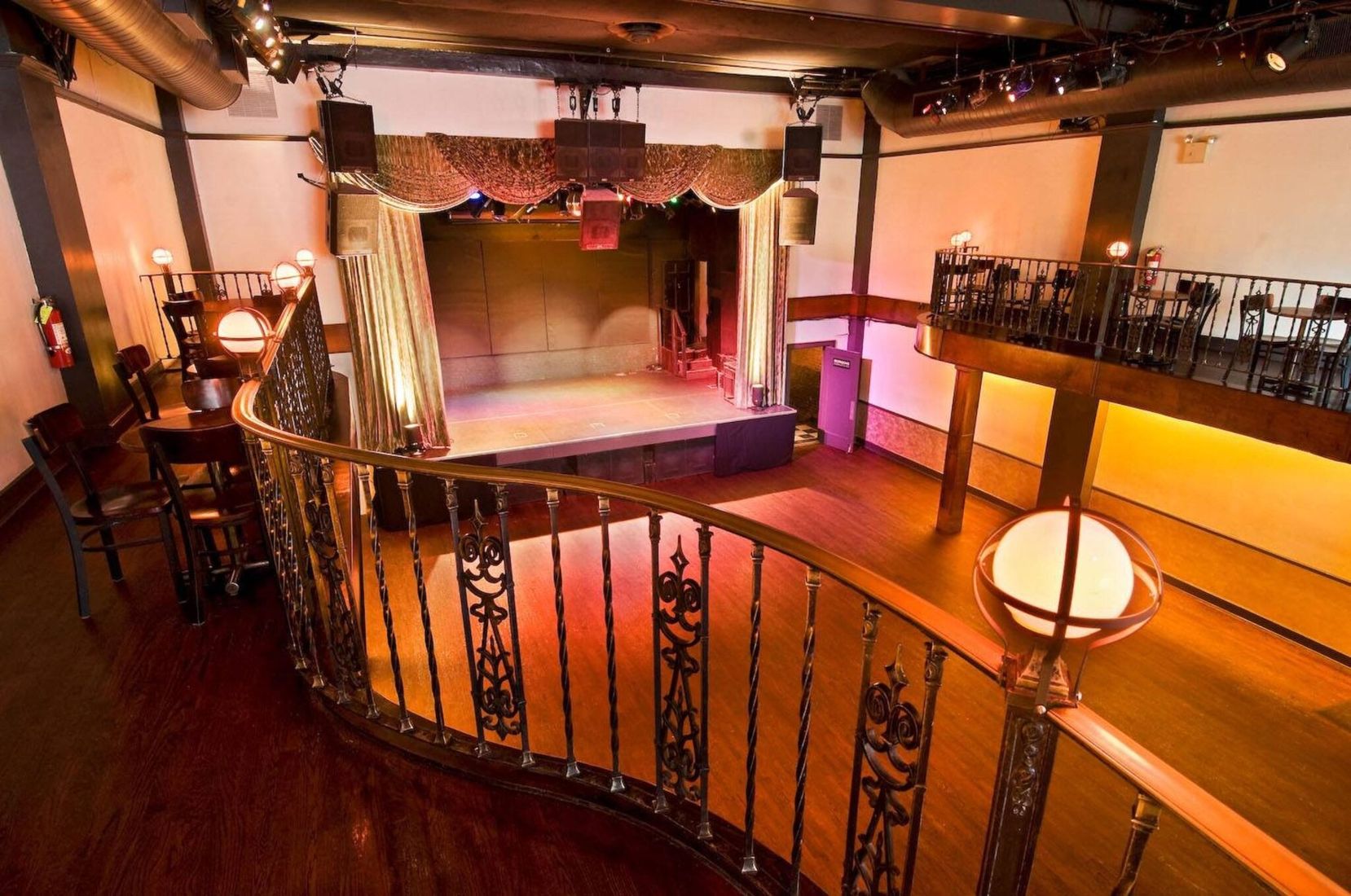 Interestingly, McCartney and his group played a surprise three night residency at the Bowery Ballroom in New York City on February 11th, 12th and 14th, 2025, this final night being Valentine's Day. Paul played "Blackbird" at each of these performances at this quaint 575-capacity Manhattan venue. Interestingly, McCartney and his group played a surprise three night residency at the Bowery Ballroom in New York City on February 11th, 12th and 14th, 2025, this final night being Valentine's Day. Paul played "Blackbird" at each of these performances at this quaint 575-capacity Manhattan venue.
Conclusion
In comparison to the production complexity of the "Sgt. Pepper" album, along with their other 1967 output, such a simple arrangement of Paul singing with his acoustic guitar alone seems lazy or, at best, a demo version of what would become something elaborate later. With "Blackbird," this wasn't a demo - it was the finished product. Did their fans feel gypped?
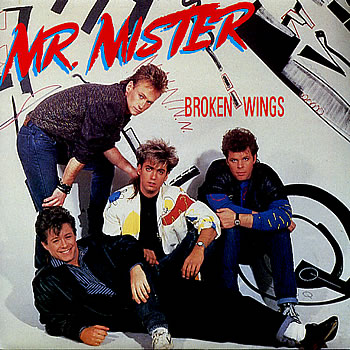 Other than Alistair Taylor's opinion noted above, nobody seemed to mind at all. In fact, the overall consensus was that the song had a refreshing simplicity inciting a feeling of being outdoors on a beautiful summer afternoon. For many, it typifies the feel of the entire “White Album,” case in point being an episode of the television drama “ER” that depicts the plight of a woman giving birth who insists on having the song “Blackbird” sung to her to calm her down during delivery. The hopeful message of the lyrics has proven to be influential as well, a more noteworthy example being the Grammy Award-winning #1 hit “Broken Wings” by the '80s band Mr. Mister. Other than Alistair Taylor's opinion noted above, nobody seemed to mind at all. In fact, the overall consensus was that the song had a refreshing simplicity inciting a feeling of being outdoors on a beautiful summer afternoon. For many, it typifies the feel of the entire “White Album,” case in point being an episode of the television drama “ER” that depicts the plight of a woman giving birth who insists on having the song “Blackbird” sung to her to calm her down during delivery. The hopeful message of the lyrics has proven to be influential as well, a more noteworthy example being the Grammy Award-winning #1 hit “Broken Wings” by the '80s band Mr. Mister.
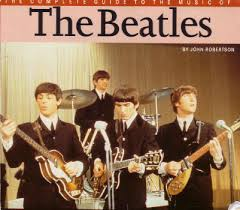 As for appreciation of its striking simplicity, author John Robertson in his book "The Complete Guide To The Music Of The Beatles" described it best: “McCartney's gently beautiful 'Blackbird' supported several interpretations, but required nothing more than appreciation for its flowing melody and its stark visual imagery...Paul never wrote a simpler or more effective song.” As for appreciation of its striking simplicity, author John Robertson in his book "The Complete Guide To The Music Of The Beatles" described it best: “McCartney's gently beautiful 'Blackbird' supported several interpretations, but required nothing more than appreciation for its flowing melody and its stark visual imagery...Paul never wrote a simpler or more effective song.”
Song Summary
“Blackbird”
Written by: John Lennon / Paul McCartney
- Song Written: April, 1968
- Song Recorded: June 11, 1968
- First US Release Date: November 25, 1968
- First US Album Release: Apple #SWBO-101 “The Beatles”
- US Single Release: Capitol Cema # S7-18892
- Highest Chart Position: n/a
- British Album Release: Apple #PCS 7067-7068 “The Beatles”
- Length: 2:20
- Key: G major
- Producer: George Martin
- Engineers: Geoff Emerick, Phil McDonald
Instrumentation (most likely):
- Paul McCartney - Lead Vocals, Acoustic Guitar (1967 Martin D-28), tapping feet
Written and compiled by Dave Rybaczewski
|
IF YOU WOULD LIKE TO MAKE A DONATION TO KEEP THIS WEBSITE UP AND RUNNING, PLEASE CLICK BELOW!
Sign Up Below for our MONTHLY BEATLES TRIVIA QUIZ!
|